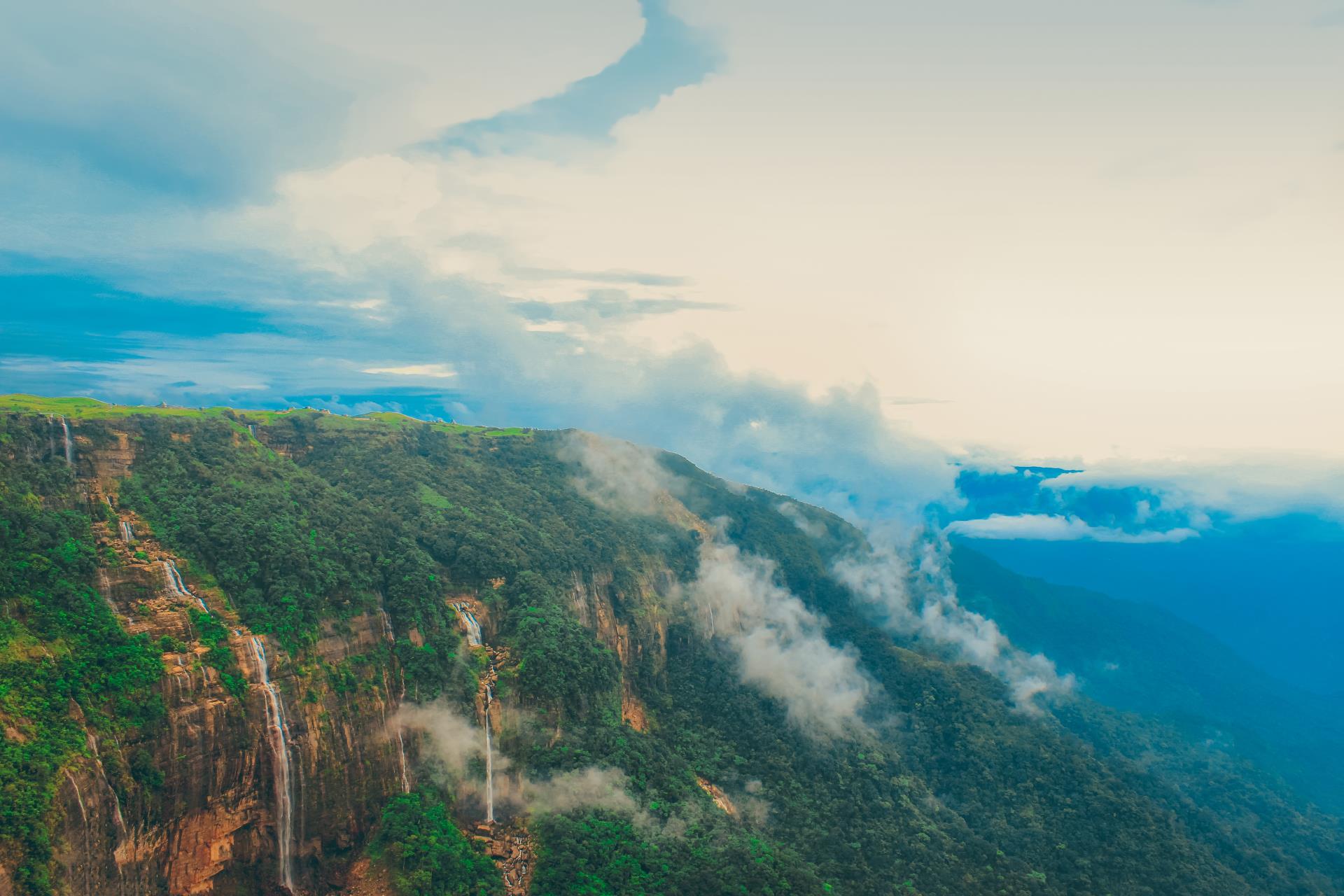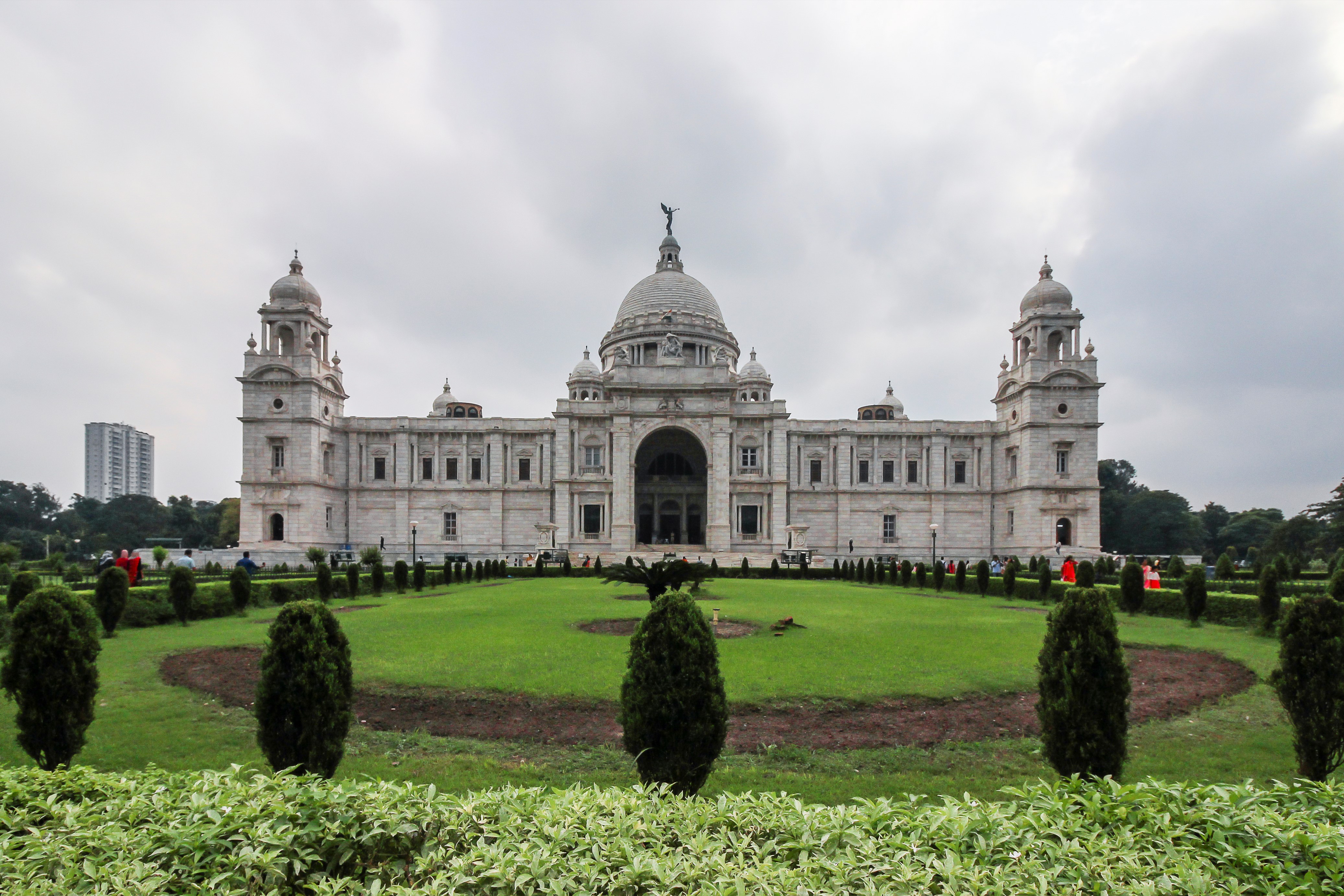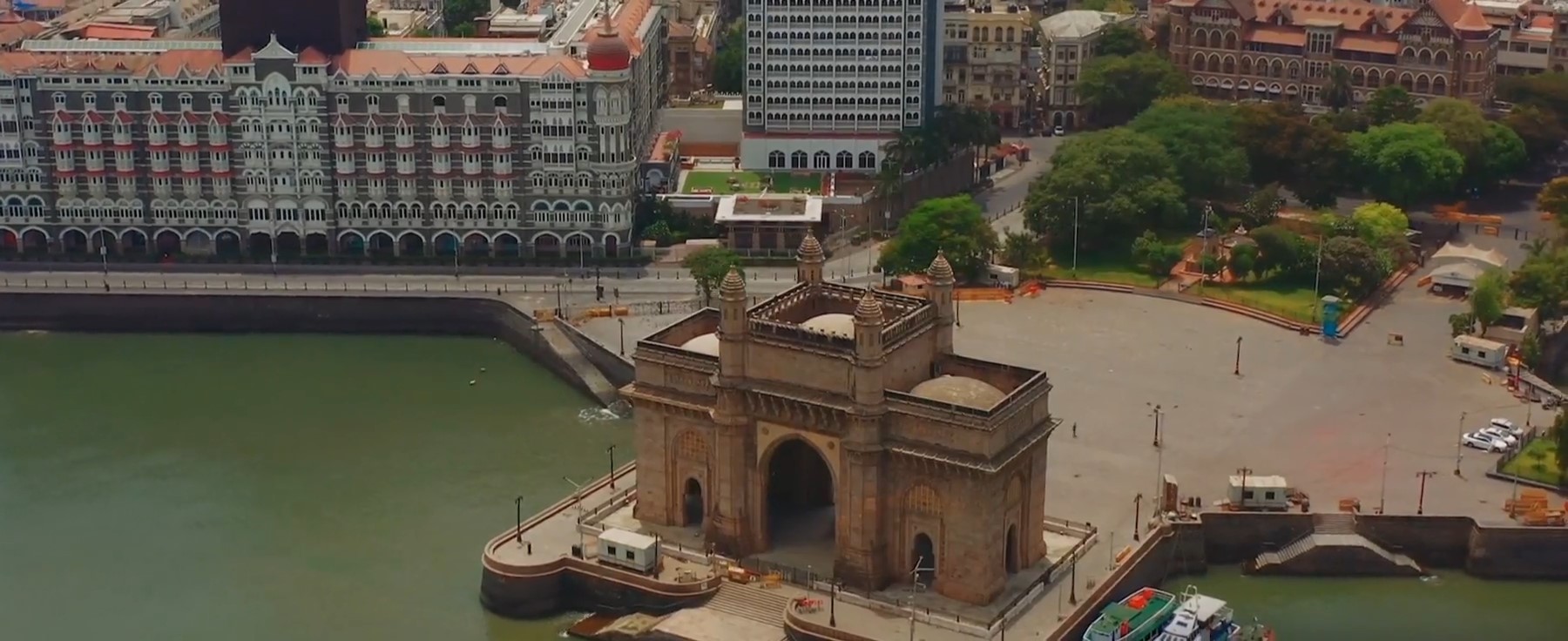
Sorry, we couldn't find anything that matches your search.
Destination

Famous Places to Explore in Hyderabad
A vibrant city with the imposing...

Raipur Tourist Places | Best Place to Visit
The stronghold of several erstwhile...

Ahmedabad
Declared as India's first UNESCO World...
#
 Start : Delhi
Start : Delhi
 End : Agra
End : Agra
 Time : 8 days
Time : 8 days
Day 1 : Arrive in Delhi

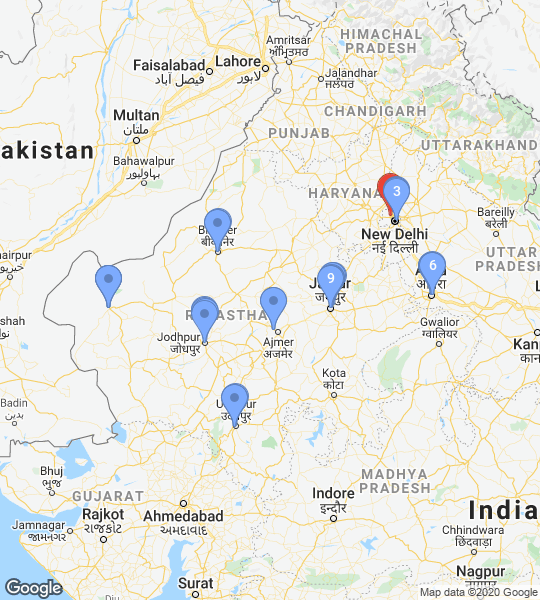
With old monuments and busy neighbourhoods subtly merging with a vibrant and contemporary cosmopolitan world, Delhi, the capital of India, is a fascinating tourist destination. Poised along the banks of River Yamuna, the capital city, which is almost 1,000 years old, offers a mesmeric mosaic of experiences, both heritage and contemporary. While the former honour the elegant ageing of centuries-old Delhi, the latter reiterate that the capital is the heart of Indian democracy, and can keep pace with the most advanced of the metropolis of the world.
Day 1 Stop 1: Morning: Red Fort
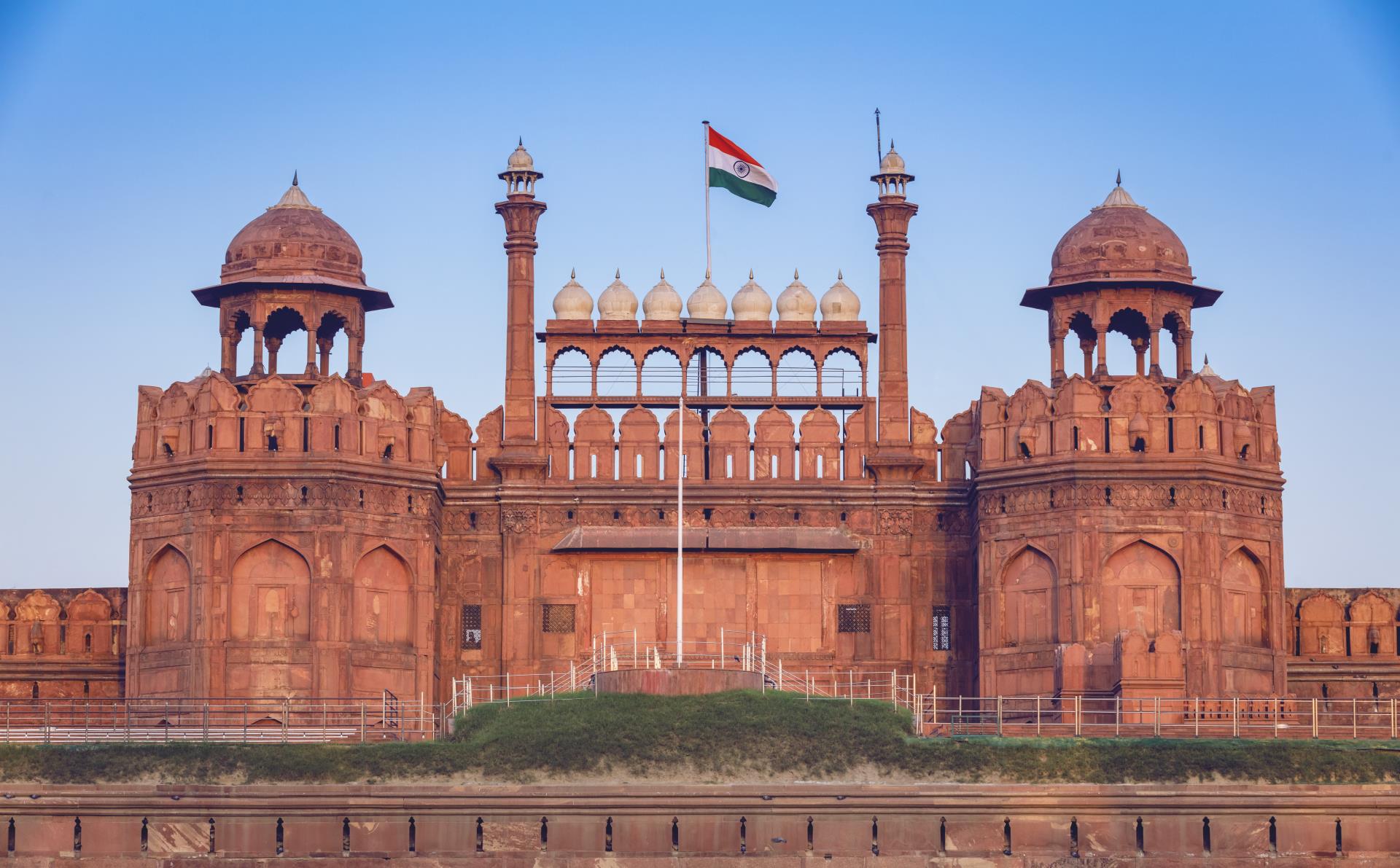
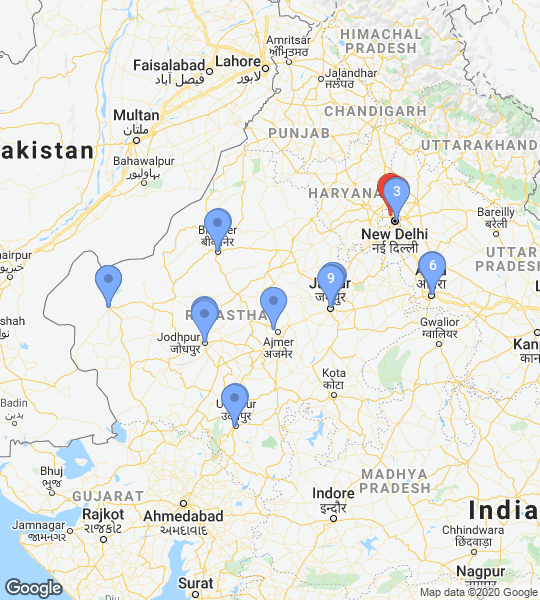
Lying at the heart of Delhi, the majestic Red Fort, made of fine red sandstone, stands as a testament to the architectural legacy of Mughals. One of the most beautiful monuments in the world, this UNESCO World Heritage Site, famous as qila-e-mubaraq, is replete with beautiful mosques, palaces and pavilions.
Good to know:
Built by Mughal emperor Shah Jahan as the palace fort of his capital Shahjahanabad, Red Fort is famous for its massive enclosing walls. The architecture of the fort reflects a seamless fusion of Islamic, Persian, Timurid and Hindu styles.
What to do:
A major draw for tourists is Son et Lumiere, a sound and light show, which is held every evening. The enchanting one-hour long show traces the Mughal empire's history in India and offers a glimpse of their glorious past as well as the eventful phases that led to their downfall.
Day 1 Stop 2: Afternoon :Old Fort (Purana Quila)
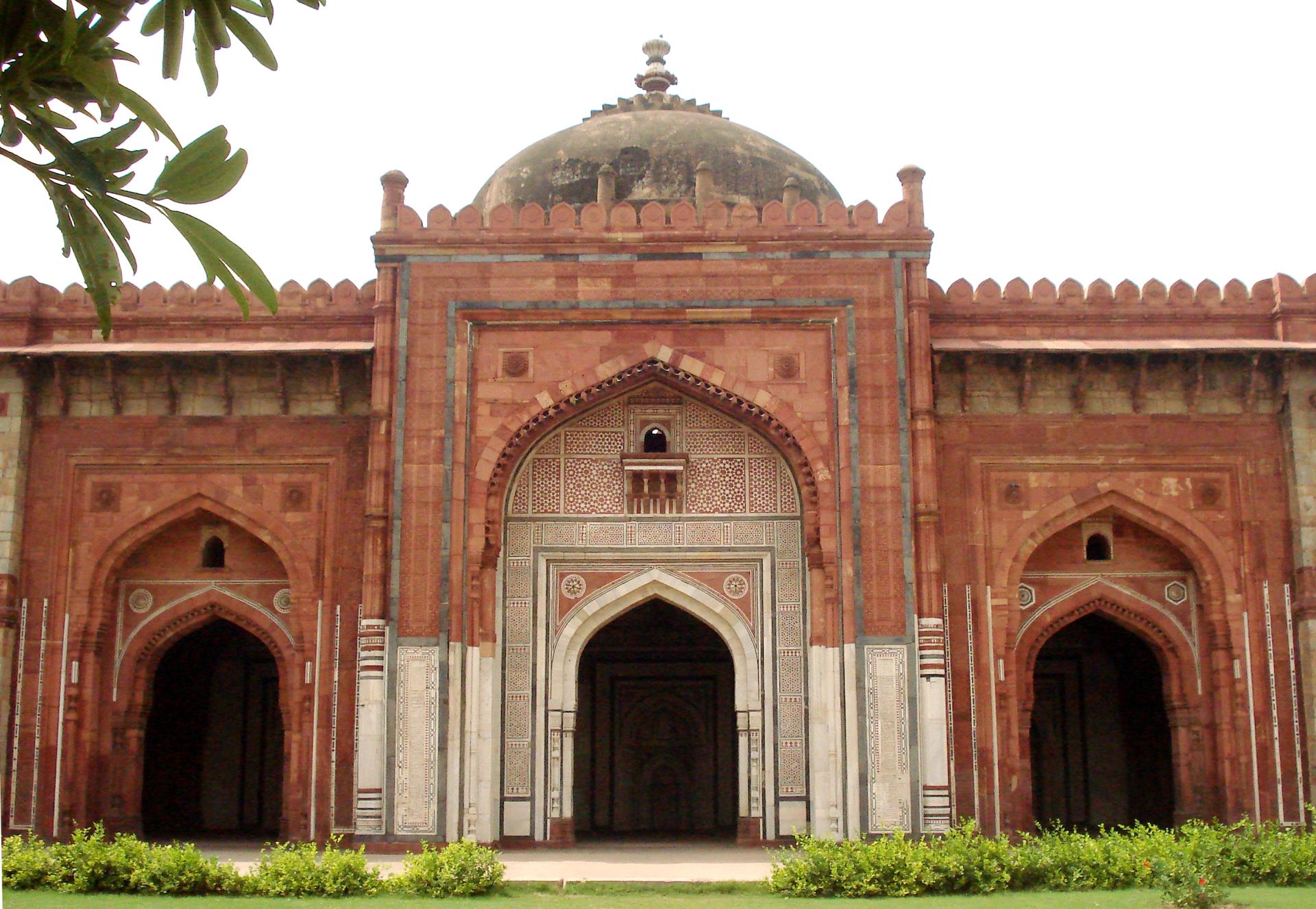
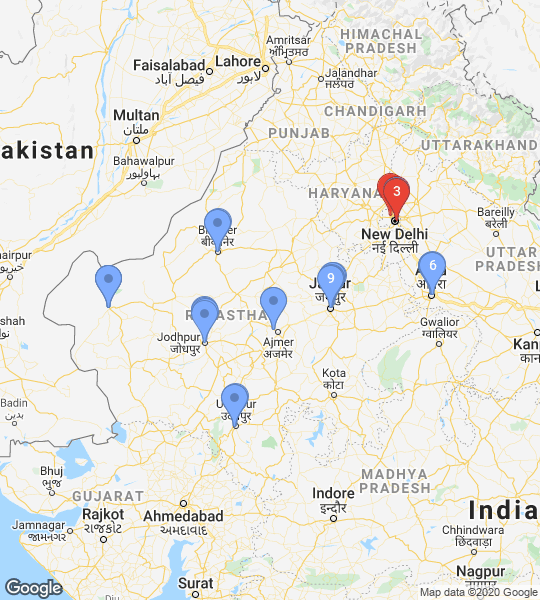
Standing amidst pristine greenery, Old Fort (Purana Quila) is roughly rectangular in shape with a circuit of nearly 2 km. The thick walls of the fort are crowned by merlons and have three gateways with bastions on either side. In ancient times, the fort was surrounded by a wide moat that was connected to River Yamuna, which flowed to the east of the fort.
Good to know:
The Northern Gate is a blend of the Islamic pointed arch and the Hindu Chhatris and brackets. The walls and the gateway of the fort were built by Mughal emperor Humayun and the work of the fort was carried forward by Sher Shah Suri, who defeated Humayun.
What to do:
The light and sound show held every evening is a fascinating experience.
Day 1 Stop 3: Evening: Feroz Shah Kotla Fort
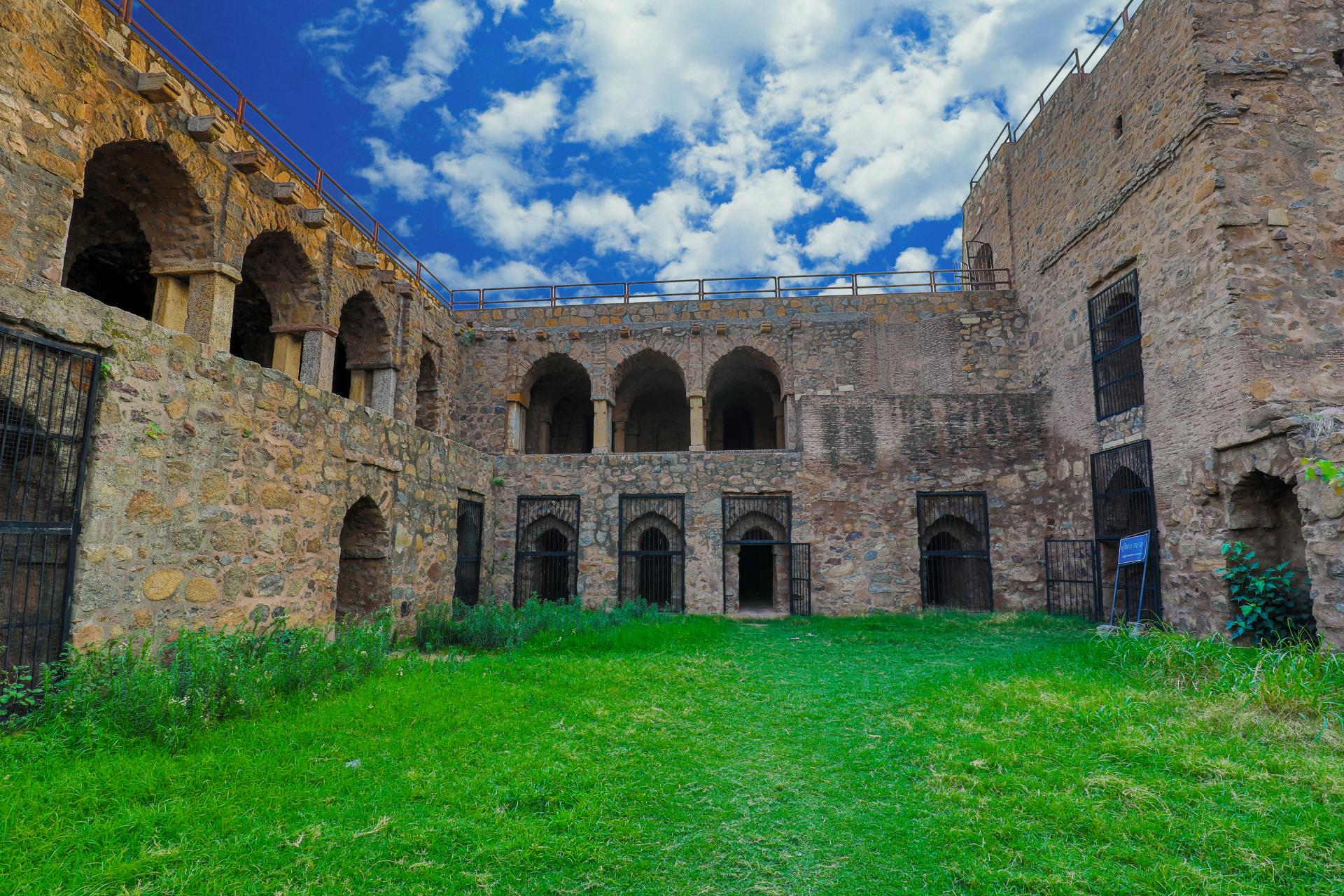
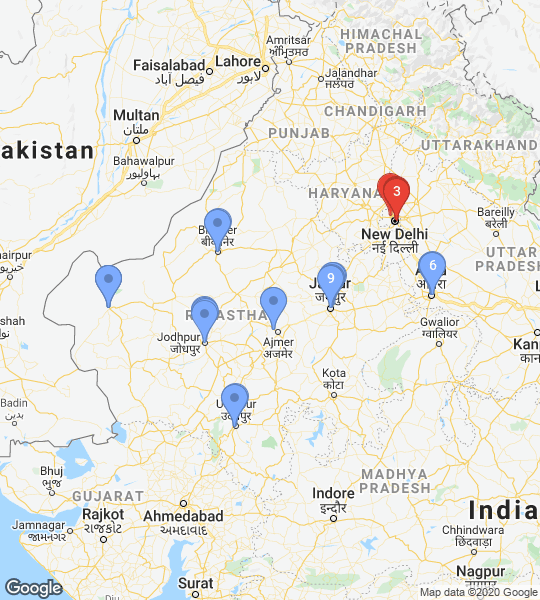
One of the oldest structures in Delhi, Feroz Shah Kotla Fort was built by Sultan Feroz Shah Tughlaq in 1354. According to historical sources, this fort was built when the ruler decided to shift his capital from Tughlaqabad to Firozabad due to the scarcity of water at the former capital. Hence, the fort was built on the banks of the holy Yamuna river to serve the purpose. The fort has some magnificent gardens, mosques, palaces etc., in its complex.
Good to know:
The entrance of the fort has a gigantic iron gate with the name of the ruler and the boundary of the fort walls are as high as 15 m. Though a number of structures in the fort are in ruins, the stepwell (baoli) is still in good condition.
What to do:
Click pictures against the Ashokan Pillar, which was brought by Feroz Shah from Ambala to Delhi. It is 13 m high and bears the inscriptions of Ashoka’s principles.
Day 2 : Arrive in Agra
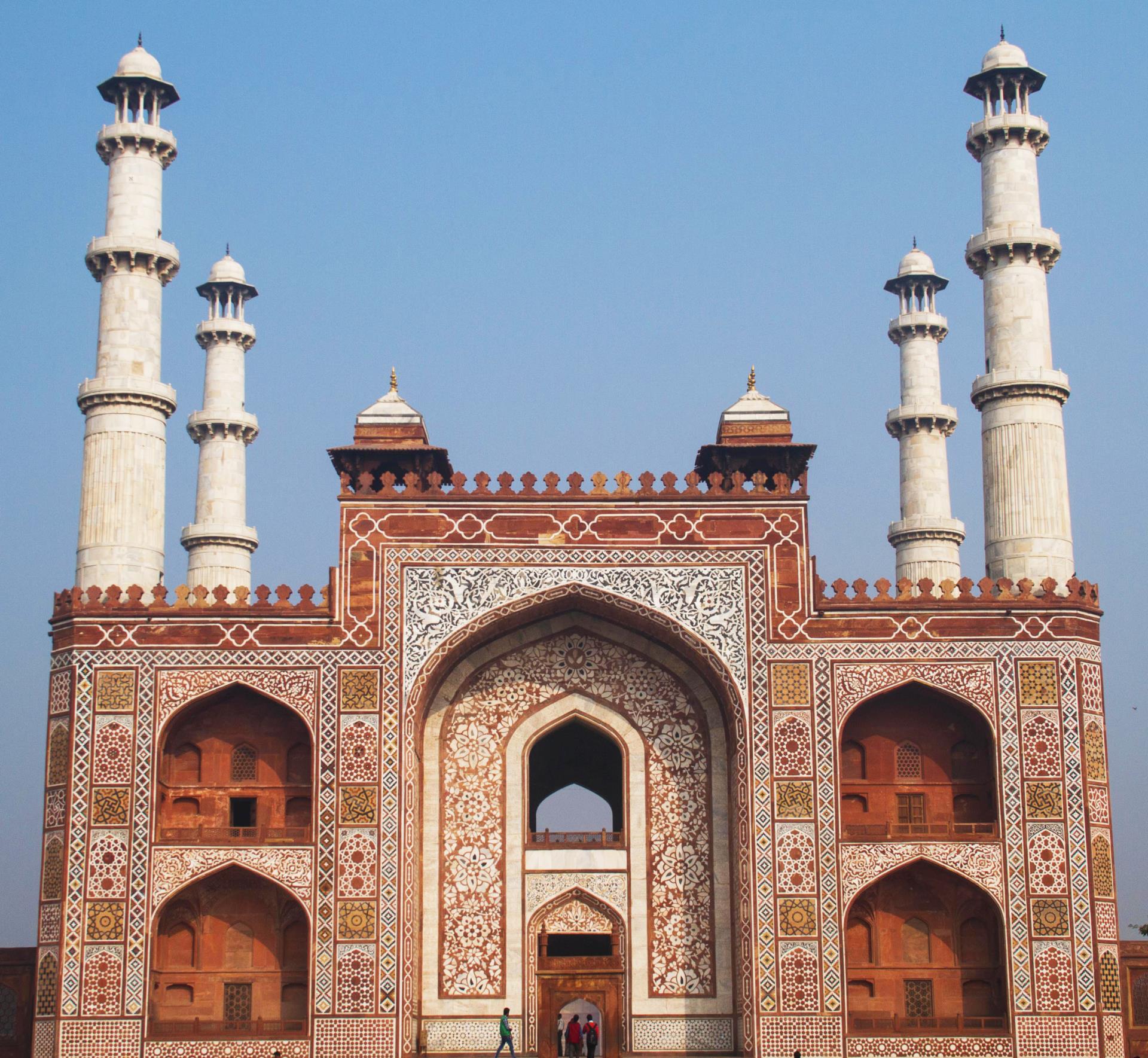
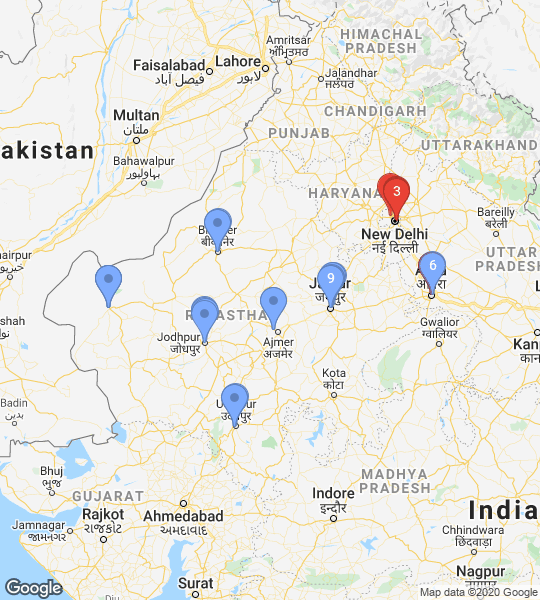
The city of the Taj Mahal, one of the seven wonders of the world, Agra in Uttar Pradesh is India's most popular tourist destination. Steeped in history, this ancient city is dotted with monuments, architectural wonders and beautifully landscaped gardens, which are remnants of the Mughal reign's majestic legacy. The city also enjoys a vibrant culinary scene while preserving its exquisite arts and crafts.
Day 2 Stop 1: Morning: Taj Mahal
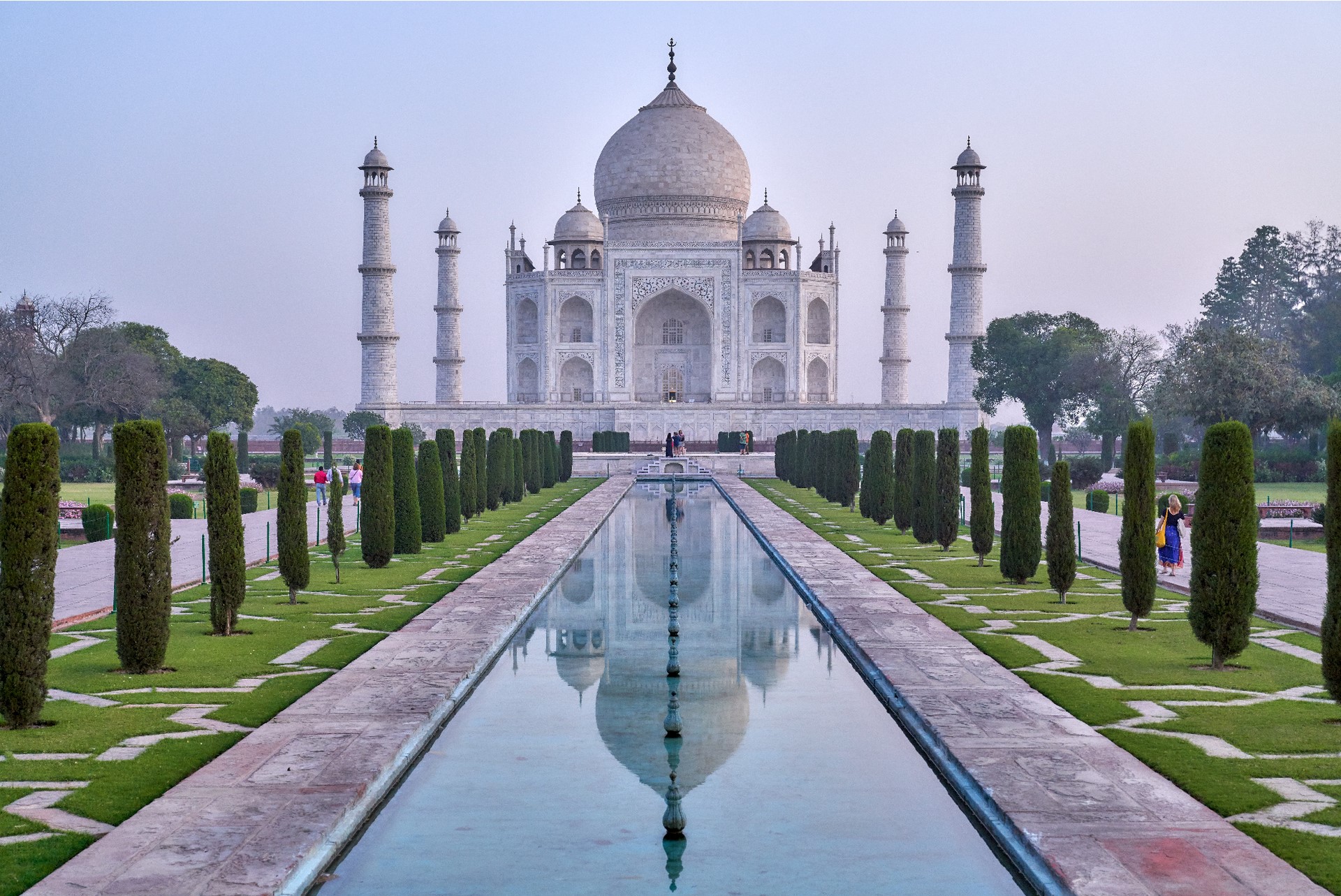

The monument was built as a memorial by Mughal emperor Shah Jahan for his deceased wife, Mumtaz Mahal. It is one of the seven wonders of the world and is a monument of pride for not just Agra but also India.
Good to know:
A UNESCO World Heritage Site, it is featured in almost all literature about India and is one of the most enduring images of the country. Its name is believed to have been drawn from the Persian language: ‘taj’ means crown and ‘mahal’ means palace, thus making this the palace of the crown.
What to do:
Taj Nature Walk covers a 70-hectare verdant natural paradise that offers exceptional views of the famous Taj Mahal. A great way to feast your eyes on the lesser-explored sites of the popular tourist destination, this takes you through a green belt situated on the right bank of River Yamuna. A trail covering roughly 9 km, it also features a series of viewing points and a vast variety of flora and fauna.
Day 2 Stop 2: Afternoon: Agra Fort
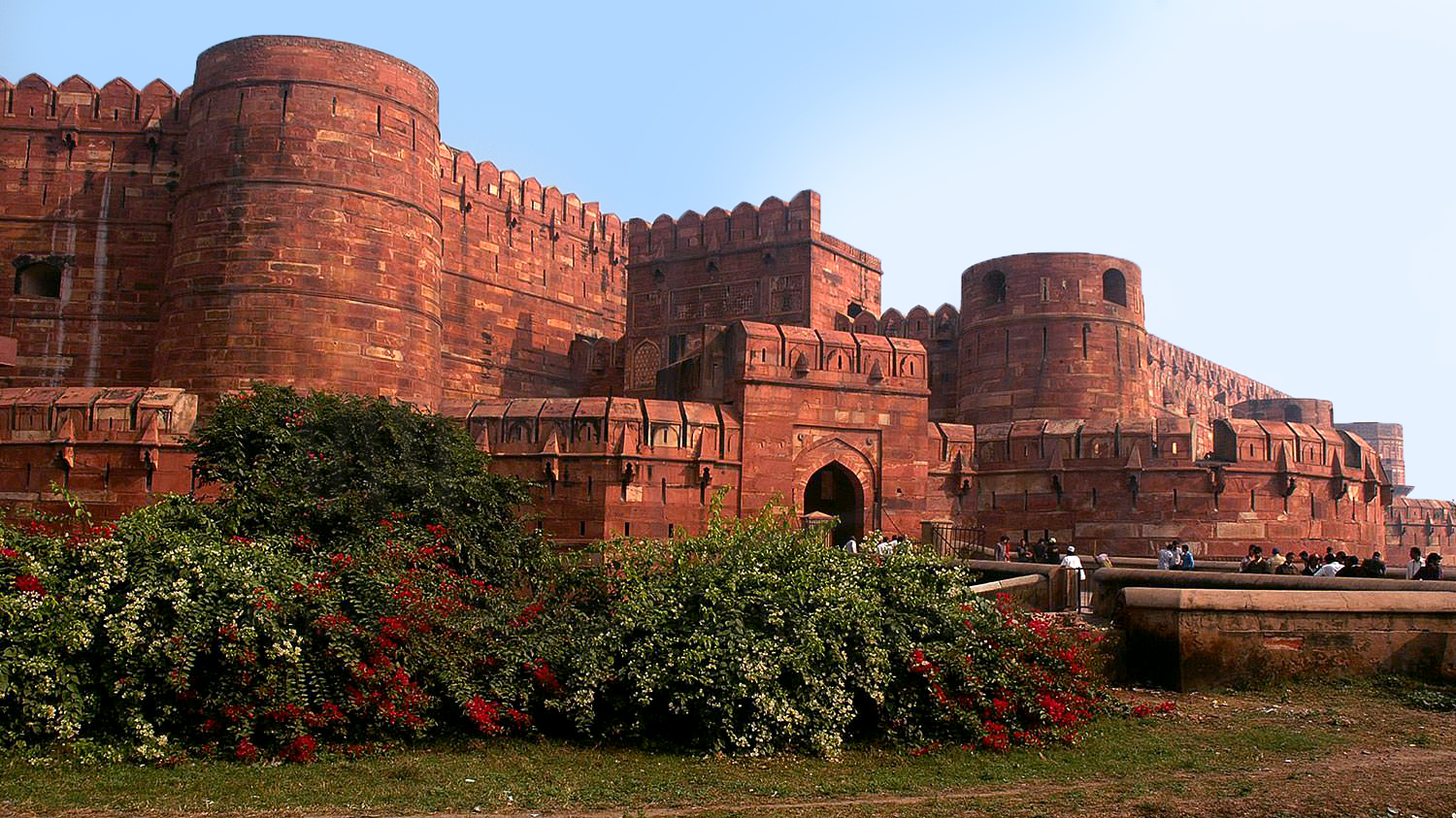
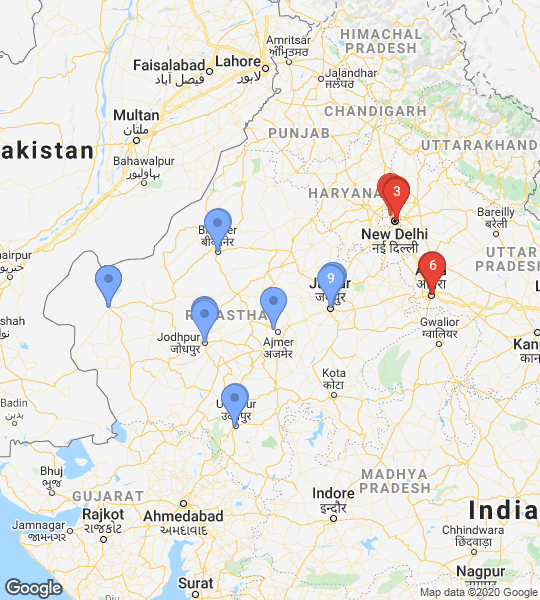
Built by Mughal emperor Akbar in 1565 AD, Agra Fort is a majestic sandstone built as an ode to the magnificence of the Mughal empire. Encompassing within its 2.5-km-long enclosure walls a stunning imperial city, the fortress is shaped like a crescent, its eastern wall flanked by River Yamuna.
Good to know:
It is said that the construction of the fort was originally begun by emperor Akbar, but completed by his grandson Shah Jahan, who added most of the marble monuments here.
What to do:
Musamman Burj, which is an octagonal tower with an open pavilion, and is believed to be where emperor Shah Jahan breathed his last, imprisoned and gazing at his beloved Taj Mahal.
Day 2 Stop 3: Evening: Chini Ka Rauza
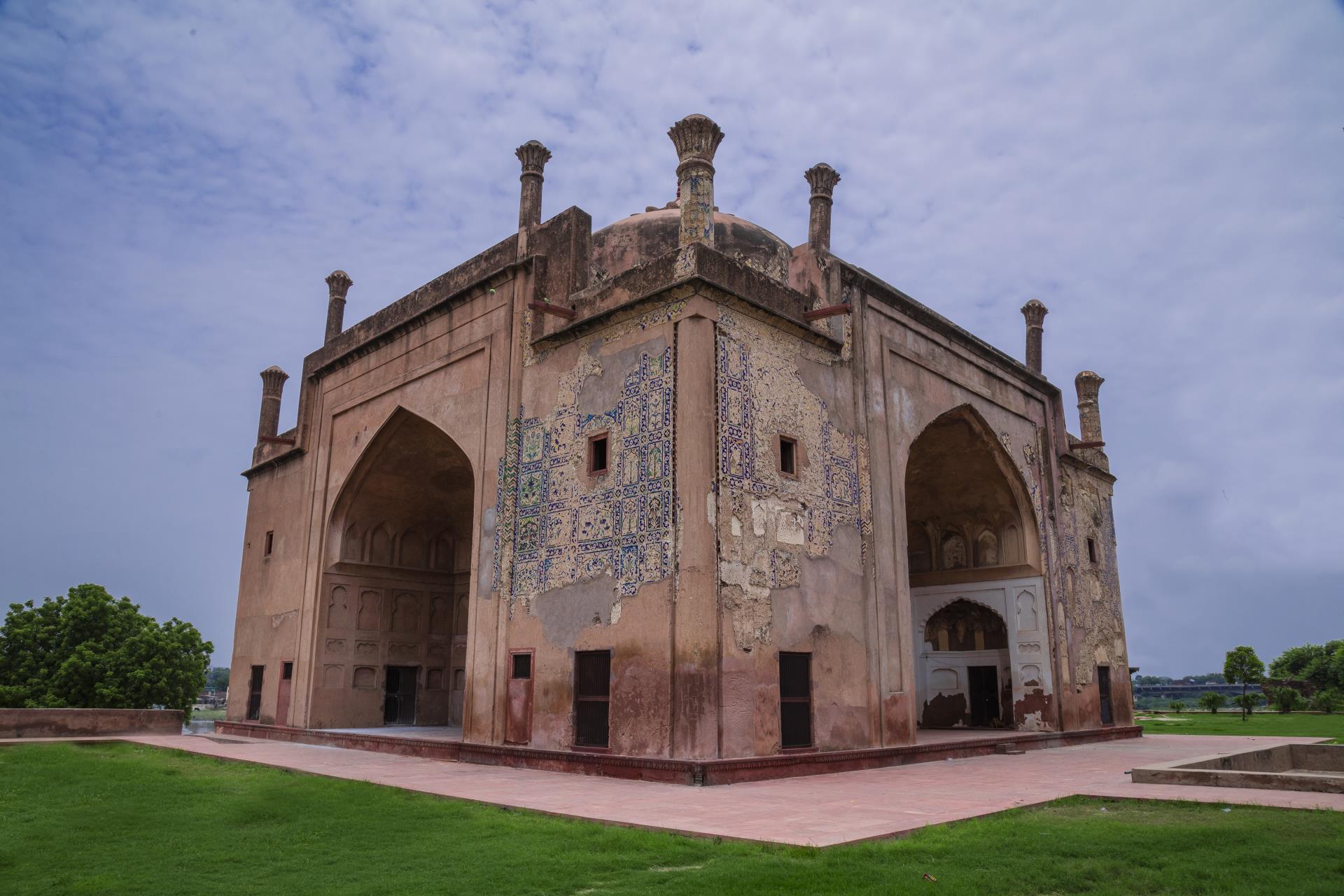
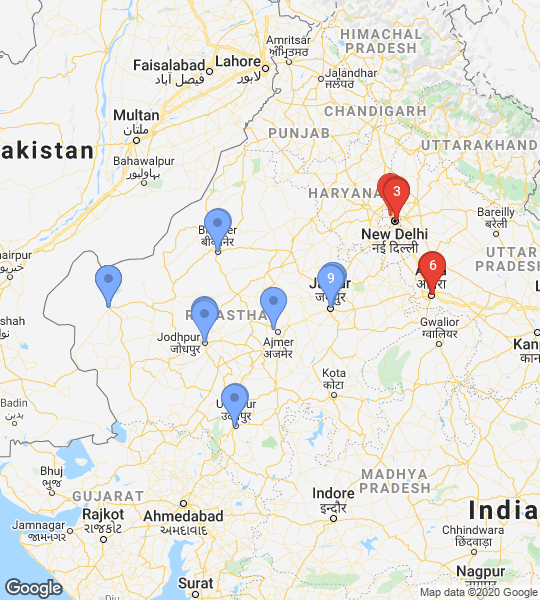
Chini-ka-Rauza is believed to be the first structure in India to have been embellished extensively using glazed porcelain tiles, and is regarded by many as a significant landmark in Indo-Persian architecture. It is the mausoleum of Mughal emperor Shah Jahan's prime minister, Afzal Khan Aalmi, who was also known as Maula Shukrullah, Shirazi.
Good to know:
The mausoleum was built in 1635 in Etmadpur and is just a kilometre away from the tomb of Itmad-ud-Daulah.
What to do:
Feast your eyes on the blue-gazed tiles, which are said to have been made of porcelain brought from China. They were called ‘chini mitti’ (Chinese clay) at the time.
Day 3 : Arrive in Jaipur
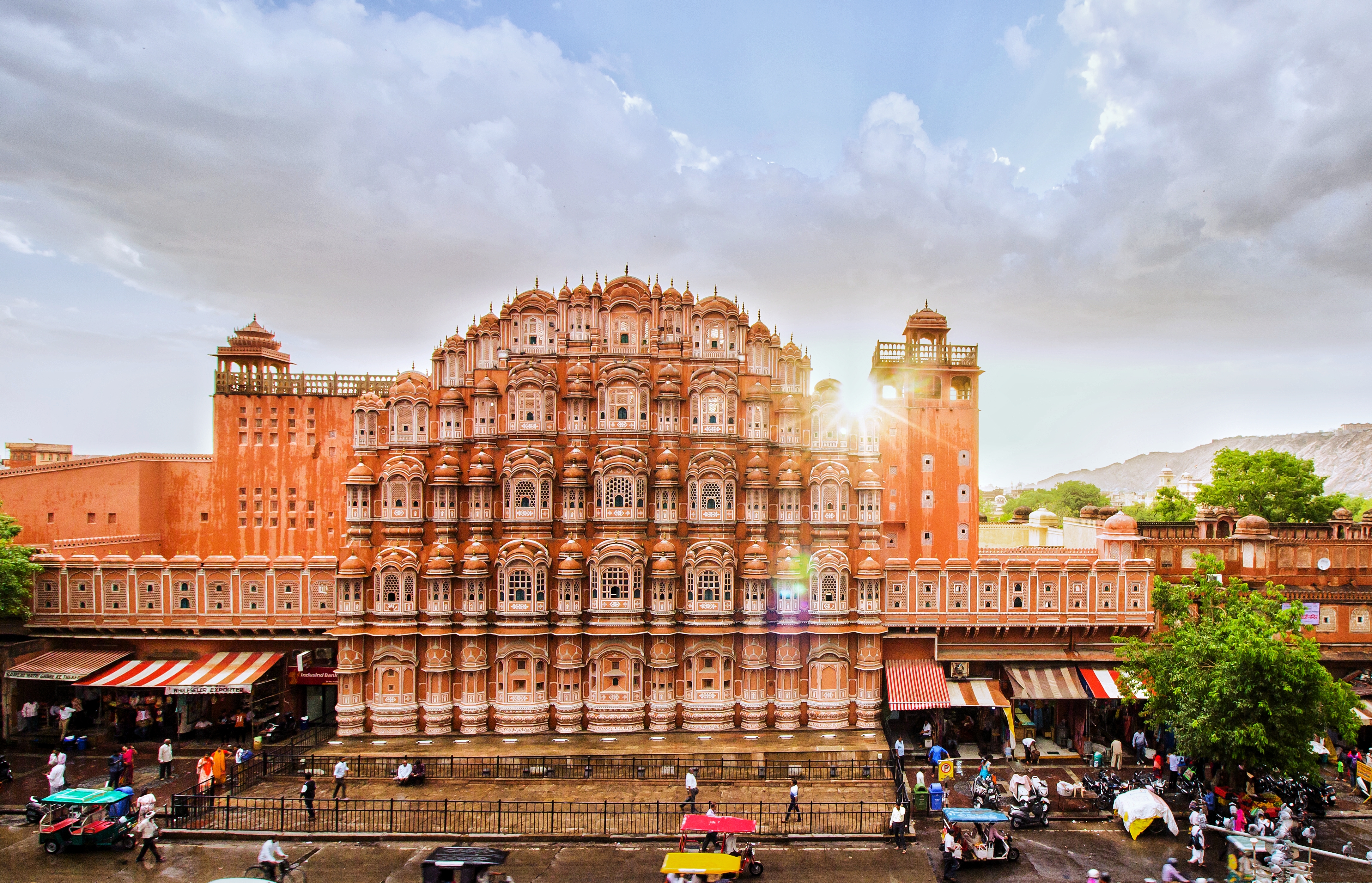
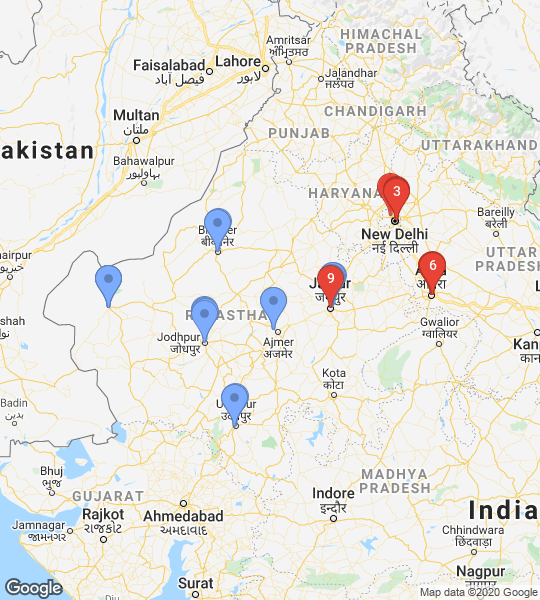
The city of palaces and forts, interspersed with historical monuments and gardens that testify the grandeur of the Rajput kings, Jaipur is the gateway to the royal heritage of India. Also called Pink City, the capital of Rajasthan remains suspended in time, with its heritage preserved in the overwhelming Hawa Mahal that gazes down at the bustling streets of Johari Bazaar.
Day 3 Stop 1: Morning: Amber Fort

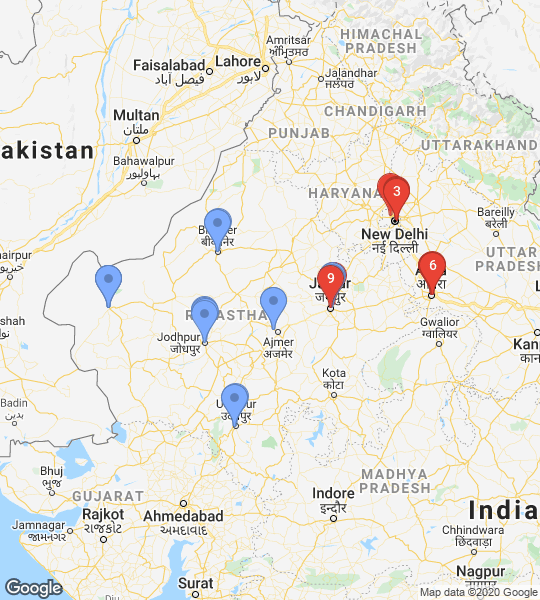
Just 11 km outside Jaipur, stands the magnificent Amber Fort (Amer Fort), sitting atop a hill, and rising like a sentinel guarding the city. Commissioned in 1592 by Maharaja Man Singh I, the fort is a fine blend of Rajput and Mughal architectural styles, boasting a grand palace, temples and several ornate gates. Built entirely of red sandstone with white marble work, this UNESCO World Heritage Site is a picture of opulence and grandeur, set against the stark desert backdrop and rolling hills.
Good to know
As you get closer to the massive gate, you realise why it was considered almost impregnable by the enemy, when the royal family used to reside here, before they shifted the capital to Jaipur. As you enter, you cross the Suraj Pol (sun gate), which leads to the main courtyard called Jaleb Chowk. Diagonally opposite is the Chand Pol (moon gate). From Jaleb Chowk, a flight of stairs leads up to the small Siladevi Temple, with doors featuring relief work in silver.
What to do:
Sheesh Mahal or the mirrored palace is another attraction that draws the largest number of tourists. It is breathtaking with fine marble work and cut-glass and mirror inlaid designs on ceilings and walls. It is said that at night, as earthen lamps flickered inside the hall, the numerous mirrors reflected the light, creating the atmosphere of a start-lit sky.
Day 3 Stop 2: Afternoon: Nahargarh Fort

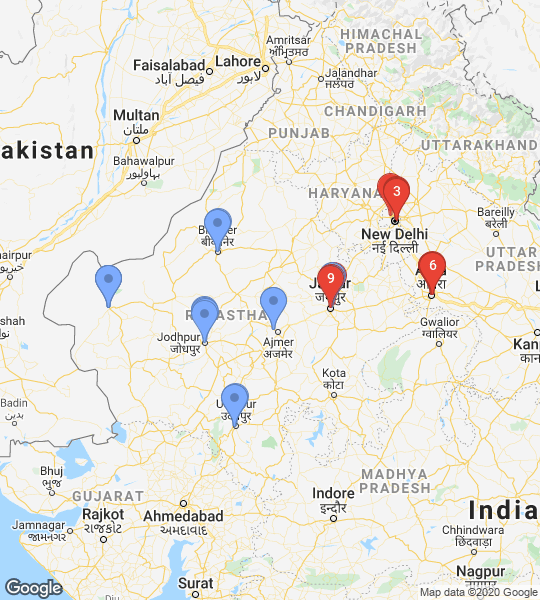
Built as a fortress and stronghold to ward off enemy invasions, the impressive Nahargarh Fort marks the northern end of Jaipur. Sitting on a ridge in the Aravalli range, the fort was constructed in 1734 and expanded in 1868. It houses the Madhavendra Bhavan, built by Maharaja Sawai Madho Singh, which used to be the royal family’s summer retreat.
Good to know:
The architecture of the fort is breathtaking in its majesty and one can see traces of Indo-European styles. 'Tadigate' is the entrance gate and to its left lies a temple dedicated to the gods of the rulers of Jaipur.
What to do:
Visit Madhavendra Bhawan hat was built by Sawai Madho Singh (ruler of Jaipur from 1750-1768). It is a two-storey building with suites for both the king and his wives. The suites bear the marks of Indian architecture with European embellishments, like rectangular casements along with European-styled lavatories. The rooms and suites are linked to each other via hallways and the interiors boast beautiful frescoes.
Day 3 Stop 3: Evening: Jaigarh Fort

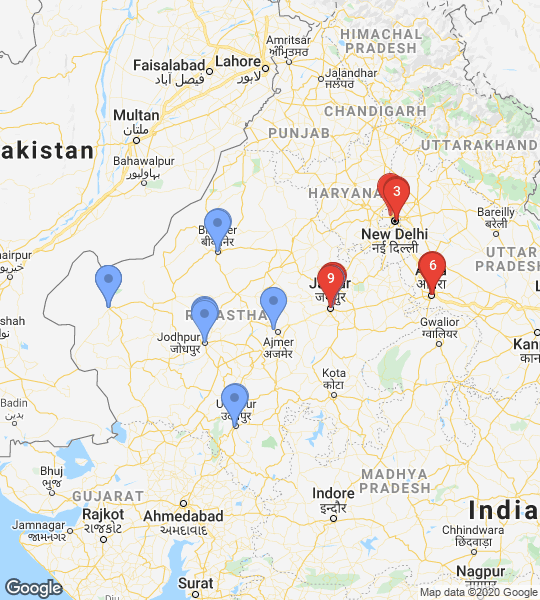
Renowned for housing Jaiban, the world's largest cannon, the Jaigarh Fort, constructed by Maharaja Sawai Jai Singh II (1880-1922), is located about 15 km from the city of Jaipur.
Good to know:
Constructed in the early 18th century, the formidable fort, built to protect the famous Amber Fort from enemy invasion, sits majestically atop a craggy hill. Though built as a military structure, there are well-planned gardens within its premises along with a residential area for the royals and temples.
What to do:
Visit the assembly hall of warriors called Shubhat Niwas, a museum and an armoury.
Day 4: Arrive in Pushkar
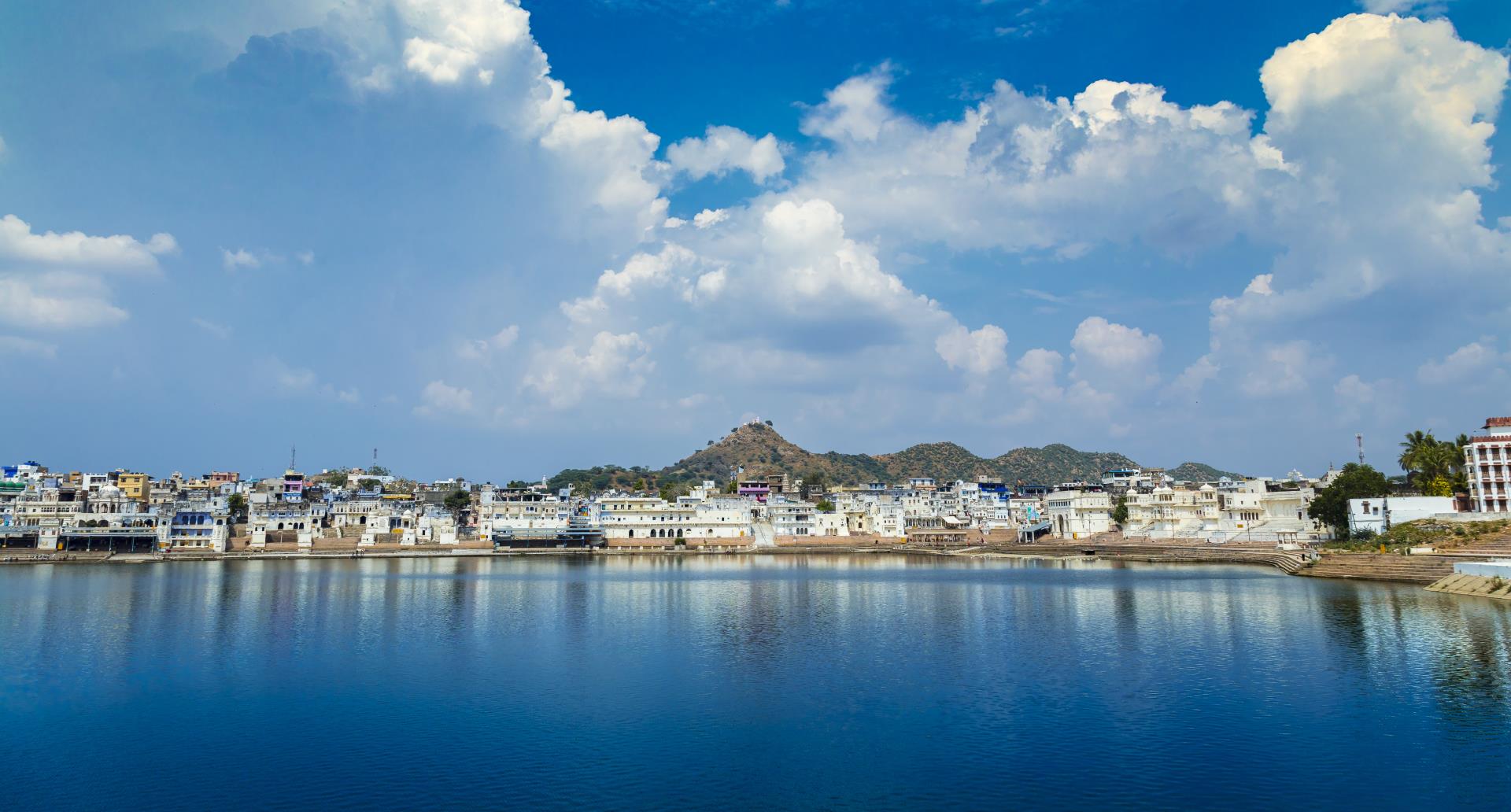
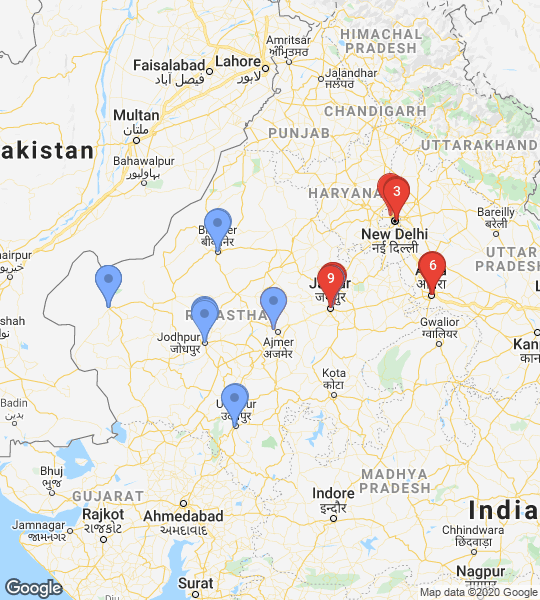
Sprawled around the serene Pushkar Lake, the quaint town of Pushkar boasts a dramatic landscape of sand dunes, lakes, hills and forests. Steeped in spirituality, Pushkar, literally translated means lotus flower, and is believed to be the seat of Lord Brahma. Thus, Pushkar is among the rare places to house a temple of Lord Brahma.
Day 4 Stop 1: Evening: Brahma Temple

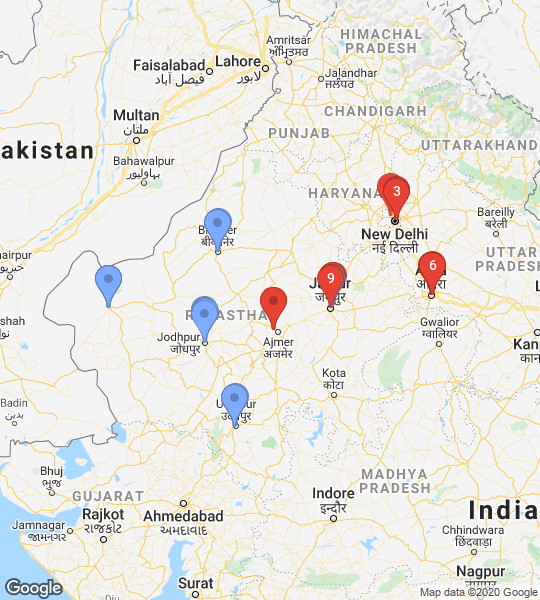
A red-spired structure that was built during the 14th century CE, it invites devotees from far and wide. Legend has it that Lord Brahma once dropped a lotus on the ground, leading to the immediate creation of a lake, which he later named after the flower.
Travel Tips
be respectful to the customs of the temple and follow the dress code.
What to do:
The soul of Pushkar vibrates in its streets and one can enjoy the city through the labyrinth of alleys and lanes, bazaars and the ghats.
Day 5: Arrive in Udaipur
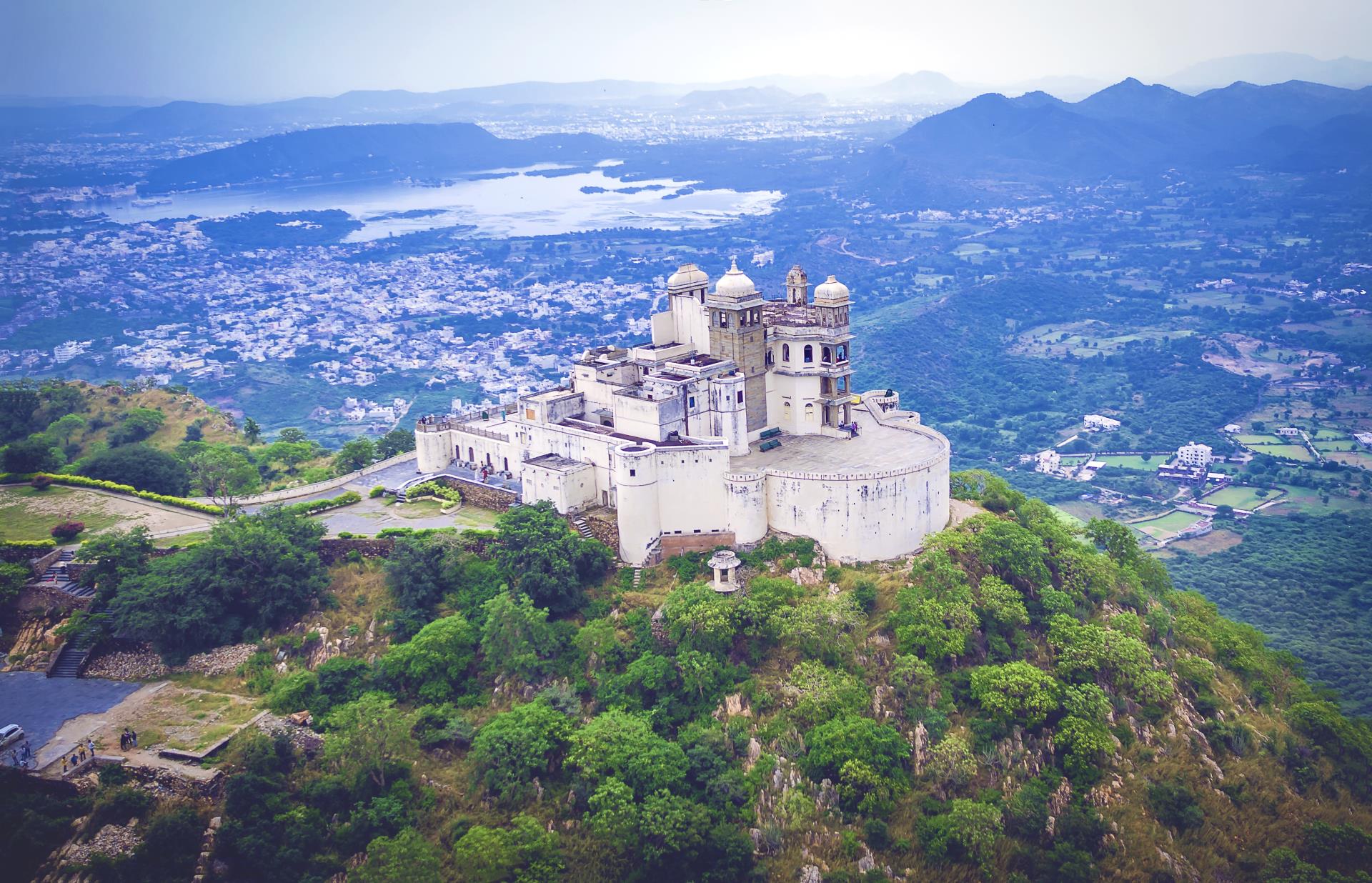
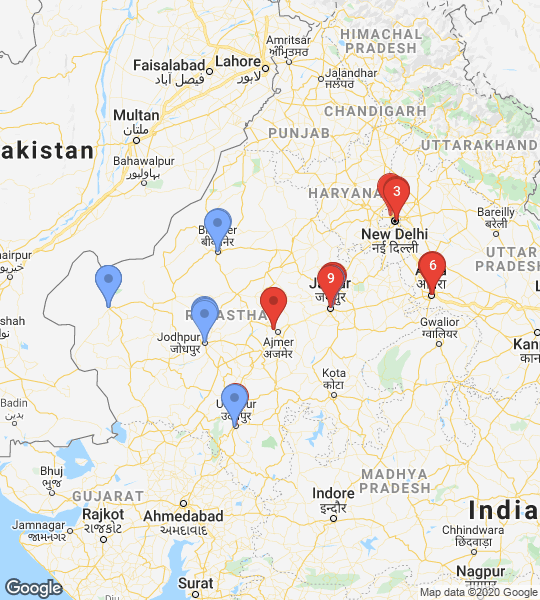
Popularly known as the City of Lakes, serene Udaipur is the crowning jewel of royal Rajasthan. With shimmering lakes visible from almost every rooftop, fairytale palaces, sprawling havelis, revered temples and narrow lanes weaving through colourful markets as ancient as the city's history, Udaipur's charm is unmatched.
Day 5 Stop 1: Morning: City Palace
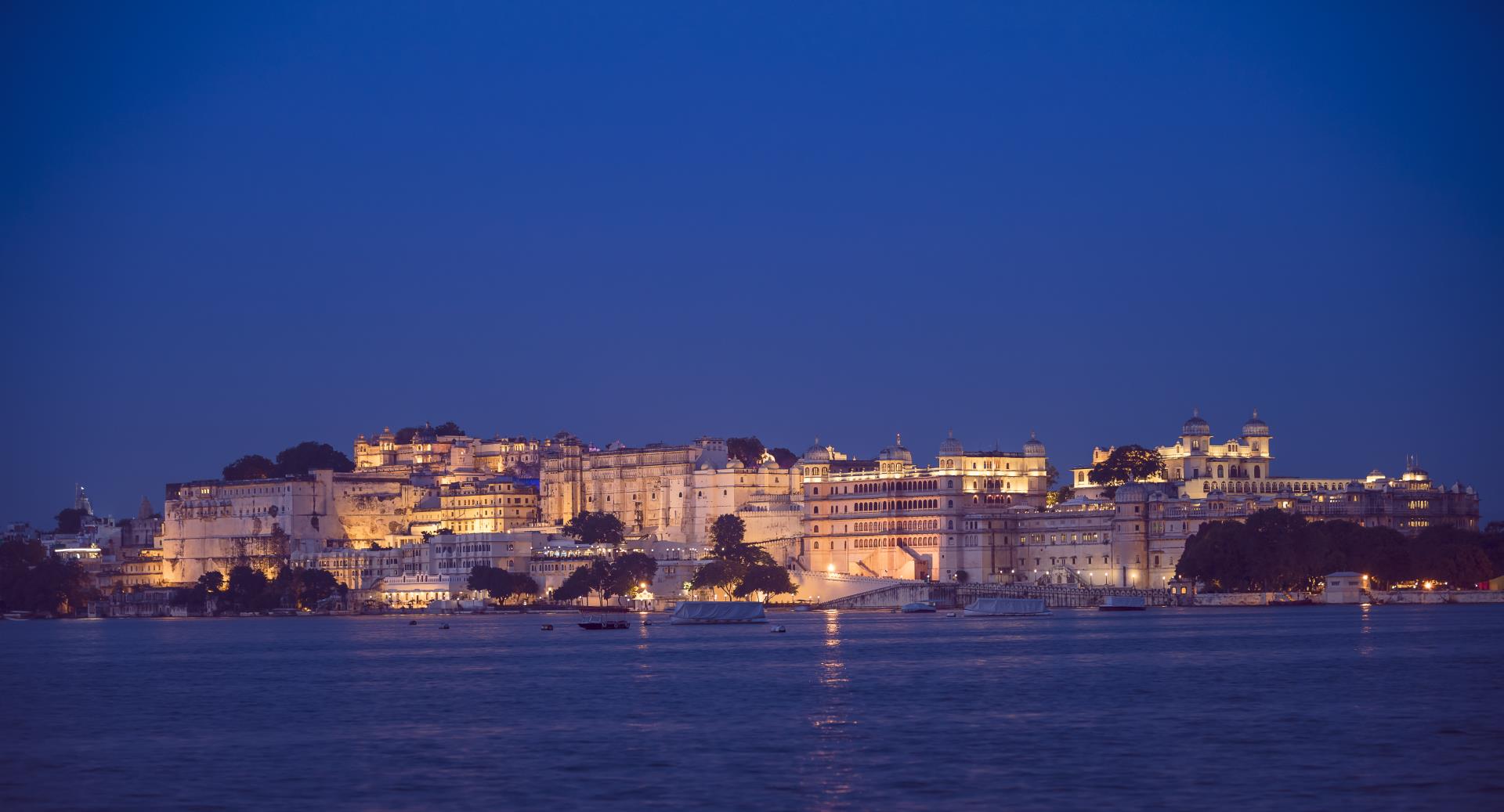
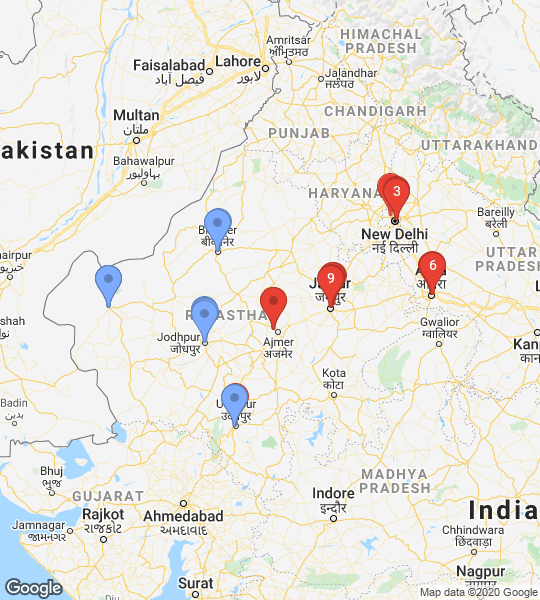
Rising from the bank of Lake Pichola, the imposing City Palace is a grand icon of Udaipur's and Rajasthan's royal past. A must-visit destination for anyone who comes to Udaipur, City Palace is the largest palace in Rajasthan. With a facade that is 244 m long and 30.4 m high, the palace complex has 11 smaller palaces.
Good to know:
Construction of the palace was started in 1599 by Maharana Udai Singh II, the city’s founder, and was extended by his successors. Though today, it seems uniform, like the brainchild of one man. It includes two luxurious palace hotels, a school and the popular City Palace Museum.
What to see:
You can marvel at the royal family's horses at the stables next to the City Palace Museum. Inside the museum, first comes Rai Angan, where it is said king Udai Singh met a sage who asked him to build the city. Its walls are lined with rare paintings. Next comes Bada Mahal, which is the exotic garden palace that stands at a 90-feet-high natural rock formation.
Day 5 Stop 2: Afternoon: Jag Mandir Palace
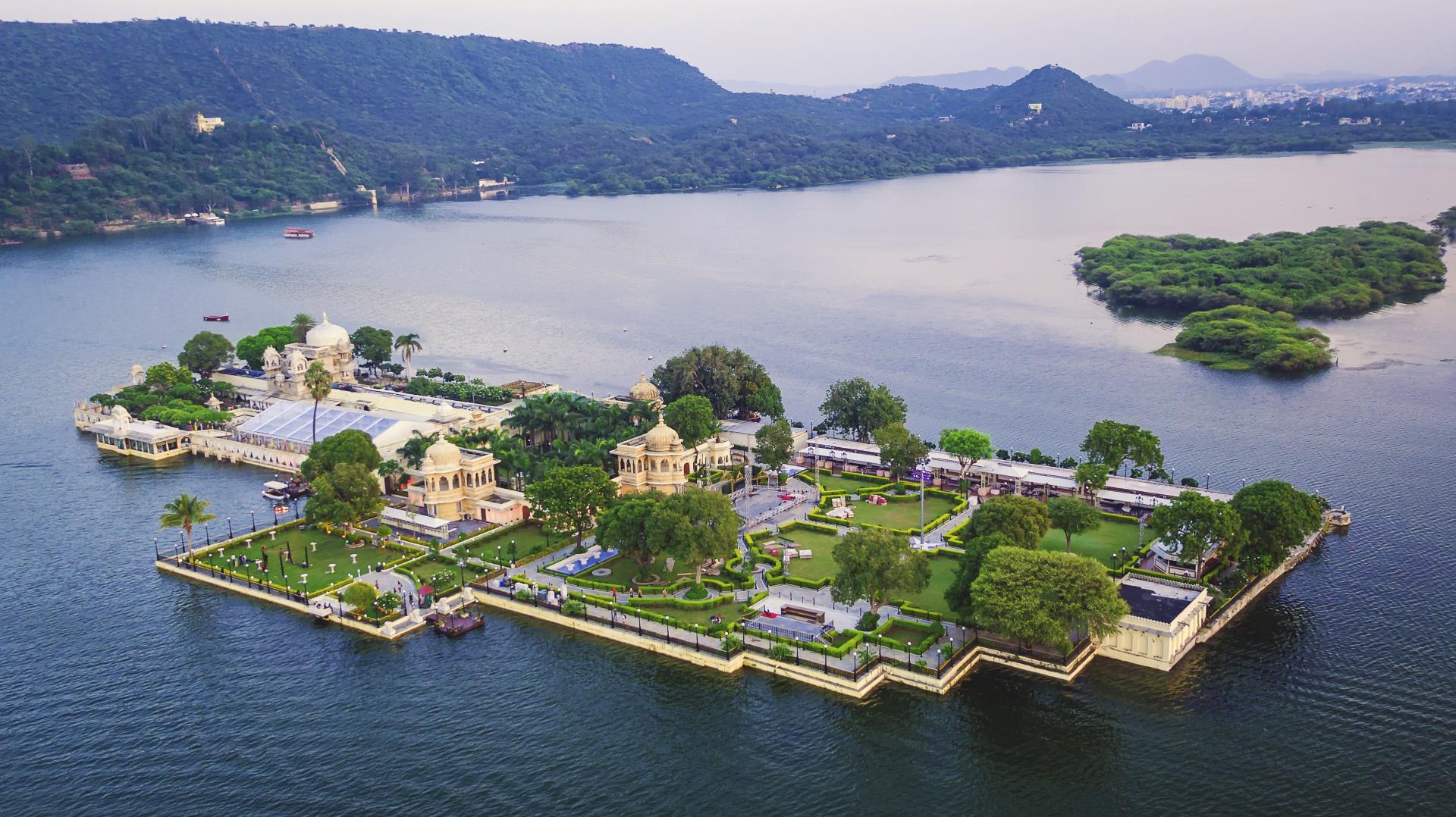
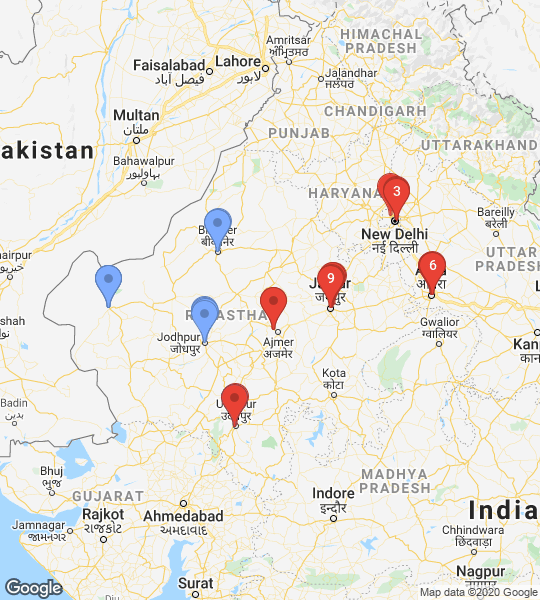
Often referred to as the 'Swarg Ki Vatika' or the garden of heaven, this beautiful palace is said to have inspired the Taj Mahal. Built on the Jag Mandir Island, about 800 m south of Jagniwas, this three-storeyed palace was built by Maharana Karan Singh II in 1620 and later completed by his son. Built in yellow sandstone and marble, it is said the king built it as a hiding place for Mughal emperor Shah Jahan, before he ascended the throne.
Good to know:
Legends say, Shah Jahan, who was then known as Prince Khurram lived here with his wife and sons. Maybe a reason why Gul Mahal, the section in which the prince lived, has strong traces of Islamic architecture, including the crescent.
What to do:
Visit the life-sized marble elephants, Bara Patharon ka Mahal, Kunwar Pada ka Mahal, Zenana Mahal and beautiful flower gardens. The palace also has a museum that offers a glimpse of history.
Day 5 Stop 3: Evening: The Lake Palace
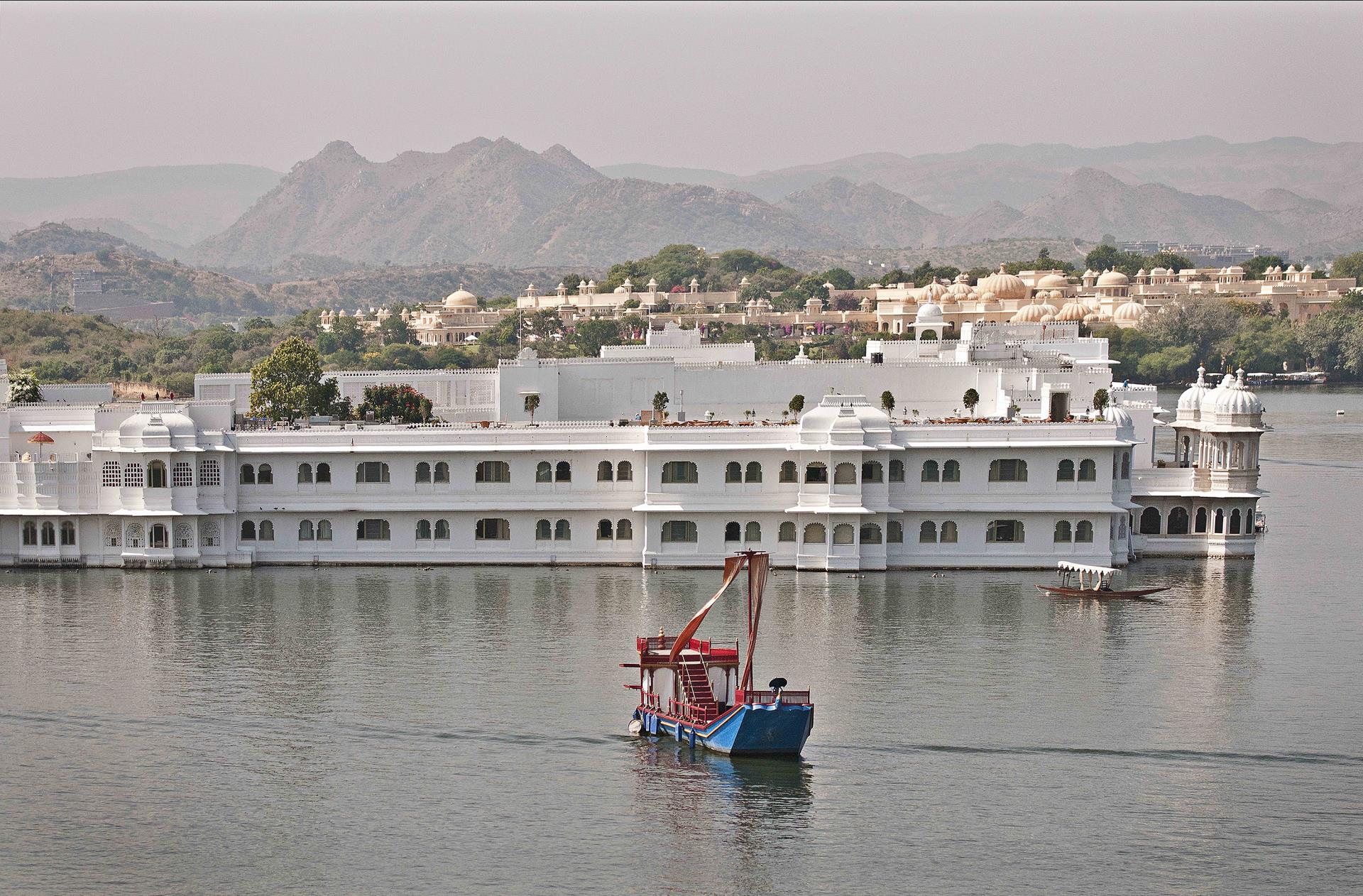
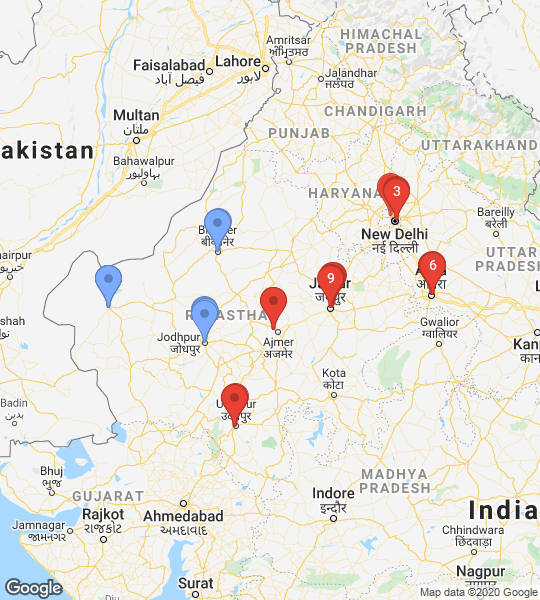
Located at the heart of Lake Pichola, the ethereal Lake Palace seems like a mirage, a dream in white floating in the brilliant blue of the lake. And every sunrise and sunset, the palace seems to melt into the molten gold of the shimmering waters.
Good to know:
The palace faces the east, in a tribute to the rising sun. With white cupolas seemingly stacked against each other, the palace is beautifully adorned with brilliant murals in a myriad of shades, series of courtyards that are aligned with numerous columns, terraces, beautiful fountains and well-laid gardens.
What to do:
In the evening, when it's lit-up it's a sight of a lifetime! Don't forget to capture pictures.
Day 6 : Arrive in Jodhpur

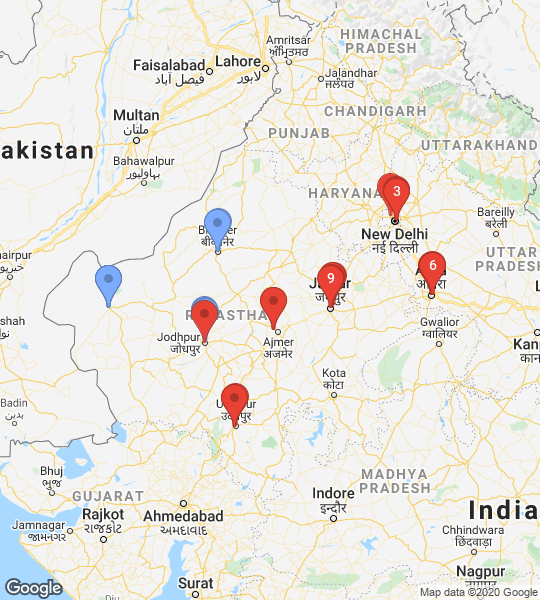
A sea of sapphire-blue painted houses, guarded by the gorgeous Mehrangarh Fort, the city of Jodhpur, the second-largest in Rajasthan, is an architectural marvel. A labyrinth of medieval lanes, interspersed with vibrant markets, criss-cross the city, which enjoys a languid pace of life.
Day 6 Stop 1: Morning: Mehrangarh Fort
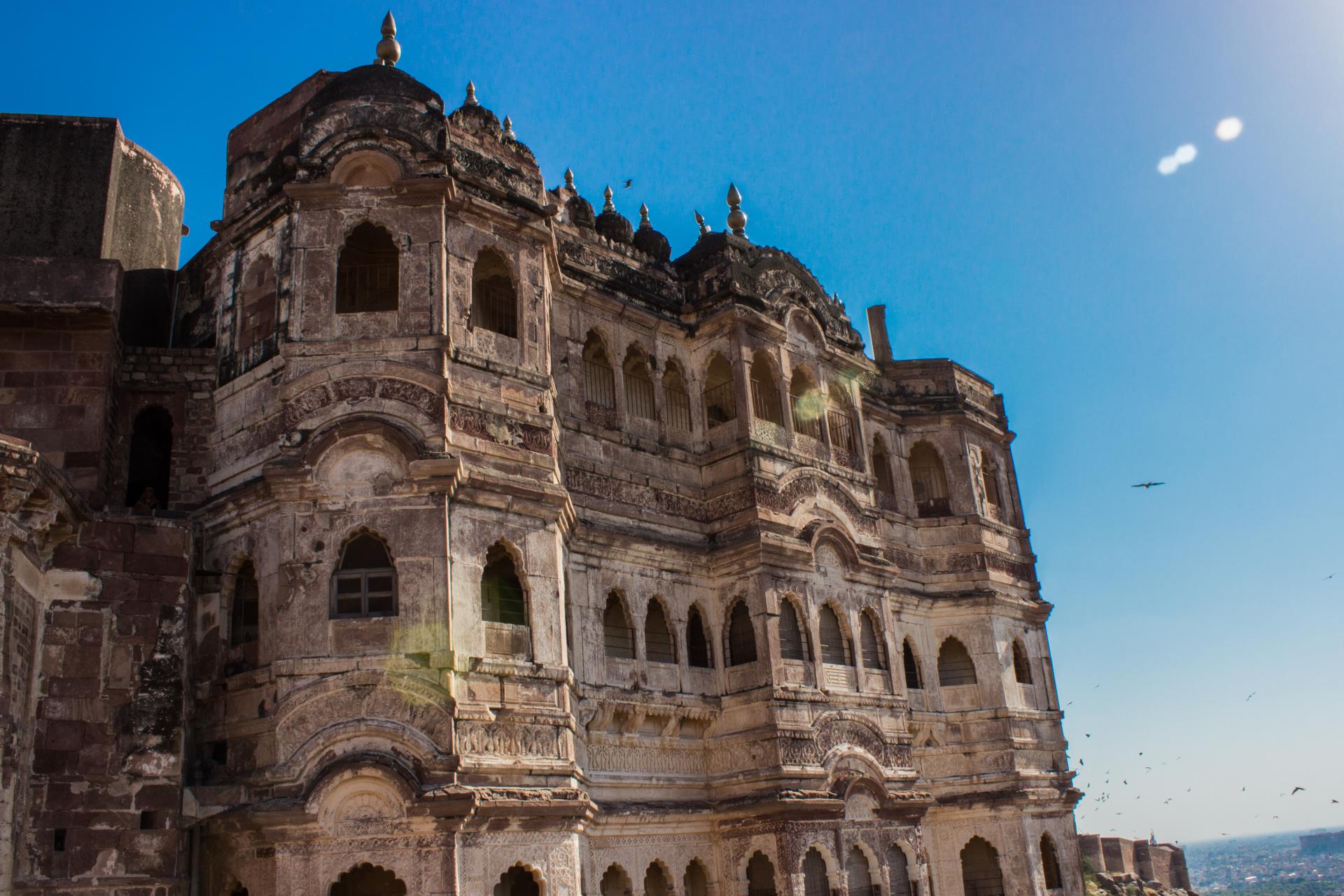
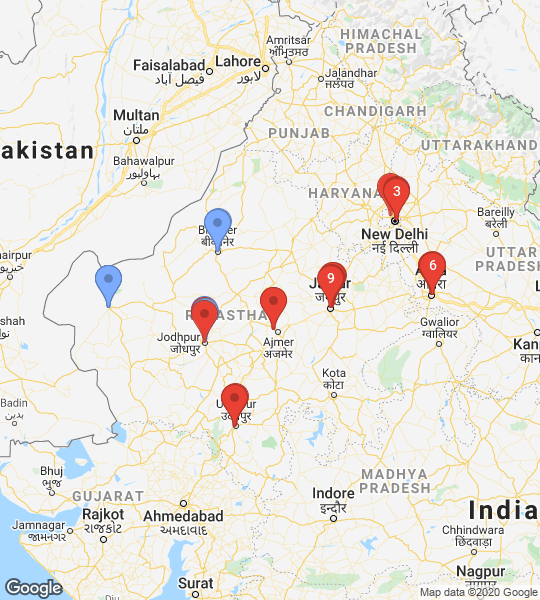
A renowned landmark of Jodhpur, Mehrangarh Fort is one of the largest in the city. An ideal vantage point for the panoramic view of Jodhpur, one can trek to the top to see the city spread like a blue ocean at the foot of a hill. The fort is a magnum opus known for its exquisite latticed windows, carved panels, intricately decorated windows and walls of the Moti Mahal, Phool Mahal and Sheesh Mahal that sit pretty within the vast, sprawling complex of the fort.
Good to know:
There are seven gates that need to be crossed in order to reach the fort. The gates still bear the marks of the battles fought in the past. One of the seven gates has been named Jaya Pol, meaning victory. It was built by Maharaja Man Singh, the ruler of Jaipur, to commemorate his victories over Jaipur and Bikaner armies.
What to do:
Head to the Elephant Howdah gallery on the southern side of Shringar Chowk, which displays the elephant seats used by the royals of Jodhpur. The most striking of these is the silver howdah presented to Maharaja Jaswant Singh I (1629-1678), the ruler of Marwar, by Mughal emperor Shah Jahan, as a symbol of honour.
Day 6 Stop 2: Afternoon: Jaswant Thada
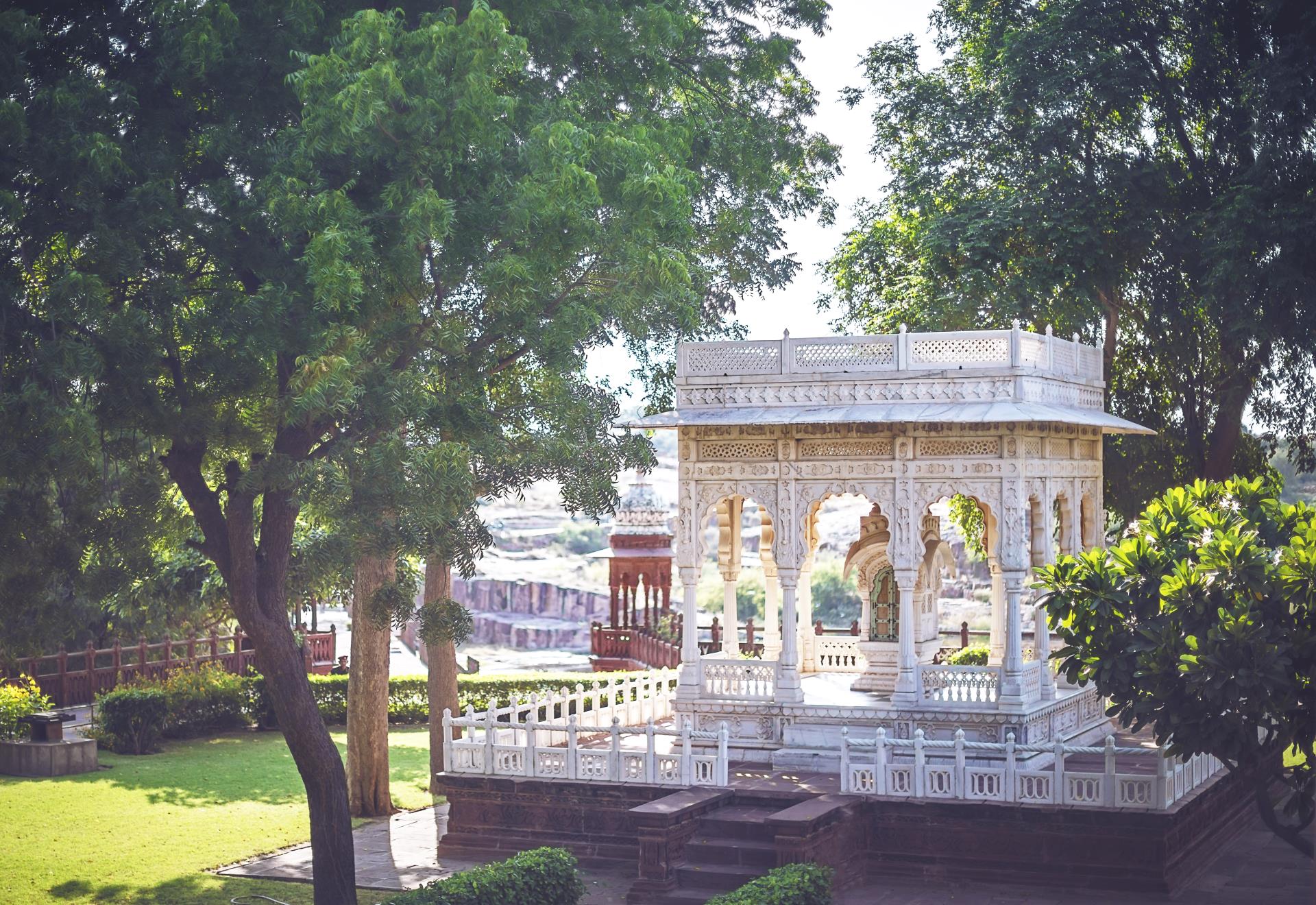
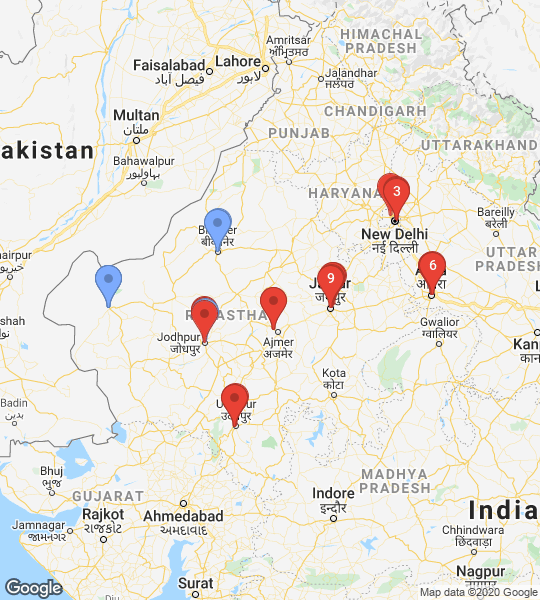
Jaswant Thada is a 19th-century royal cenotaph located to the left of the Mehrangarh Fort complex. An ideal of architectural excellence, it is a white marble memorial built with intricately carved sheets of marble; in fact, the facade glints when sun rays fall on it.
Good to know:
It was built by Maharaja Sardar Singh to commemorate his father Maharaja Jaswant Singh II, the 33rd Rathore ruler of Jodhpur.
What to do:
Jaswant Thada serves as a museum and gallery of sorts, displaying memorabilia, including paintings and portraits of the rulers of Jodhpur, to the public. The grounds of the thada serve as a venue for morning concerts during music festivals such as the Rajasthan International Folk Festival and the World Sacred Spirit Festival, prompting thousands of tourists to flock to the city in search of recreation and musical enlightenment.
Day 6 Stop 3 : Evening: Umaid Bhawan Palace
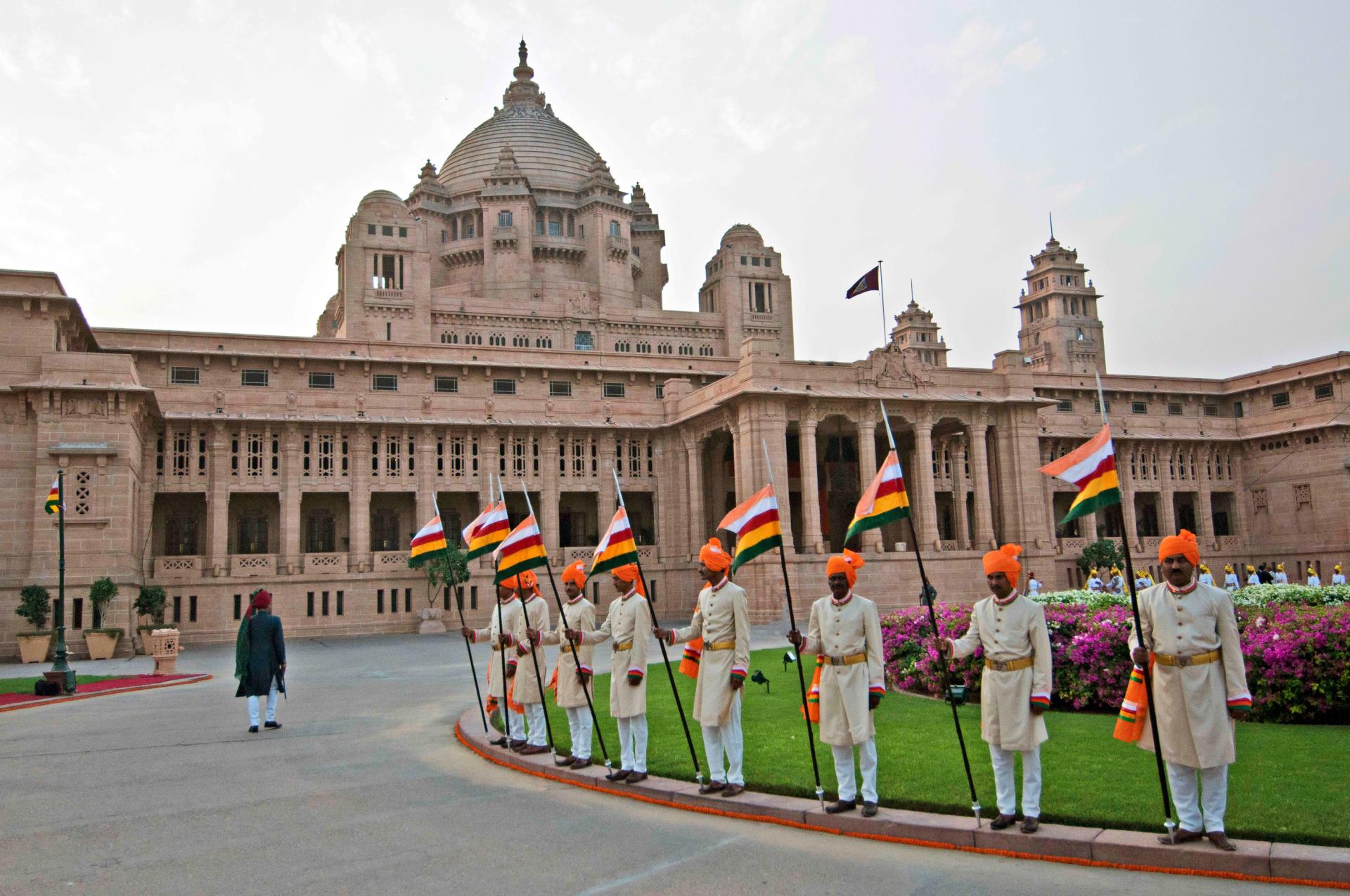
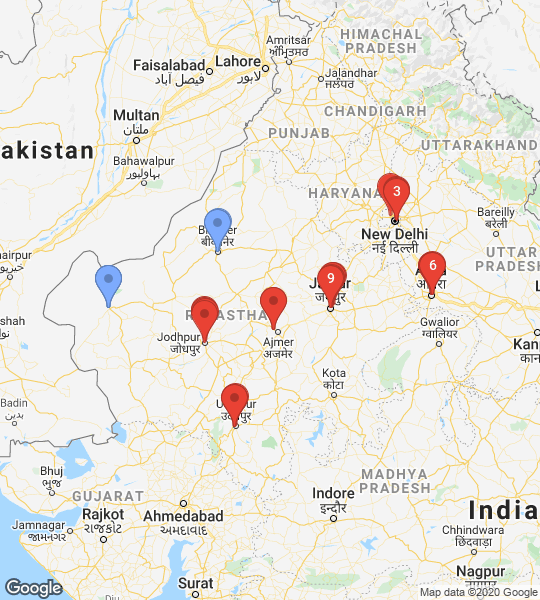
Umaid Bhawan Palace is considered as one of the most opulent and largest homes ever built. Showcasing a lovely blend of eastern and western architectural influences, it boasts large viewing balconies, tall ceilings and sturdy stone pillars.
Good to know:
The palace is surrounded by splendid gardens and houses over 350 rooms. It was converted into a heritage hotel in 1977, and is now segmented into a museum, the Royal residence, and a Heritage Hotel.
What to do:
The palace sits on Chittar Hill, the highest point in Jodhpur, and gives a fascinating view of the blue city. From here, one can capture stunning pictures.
Day 7: Arrive in Jaisalmer
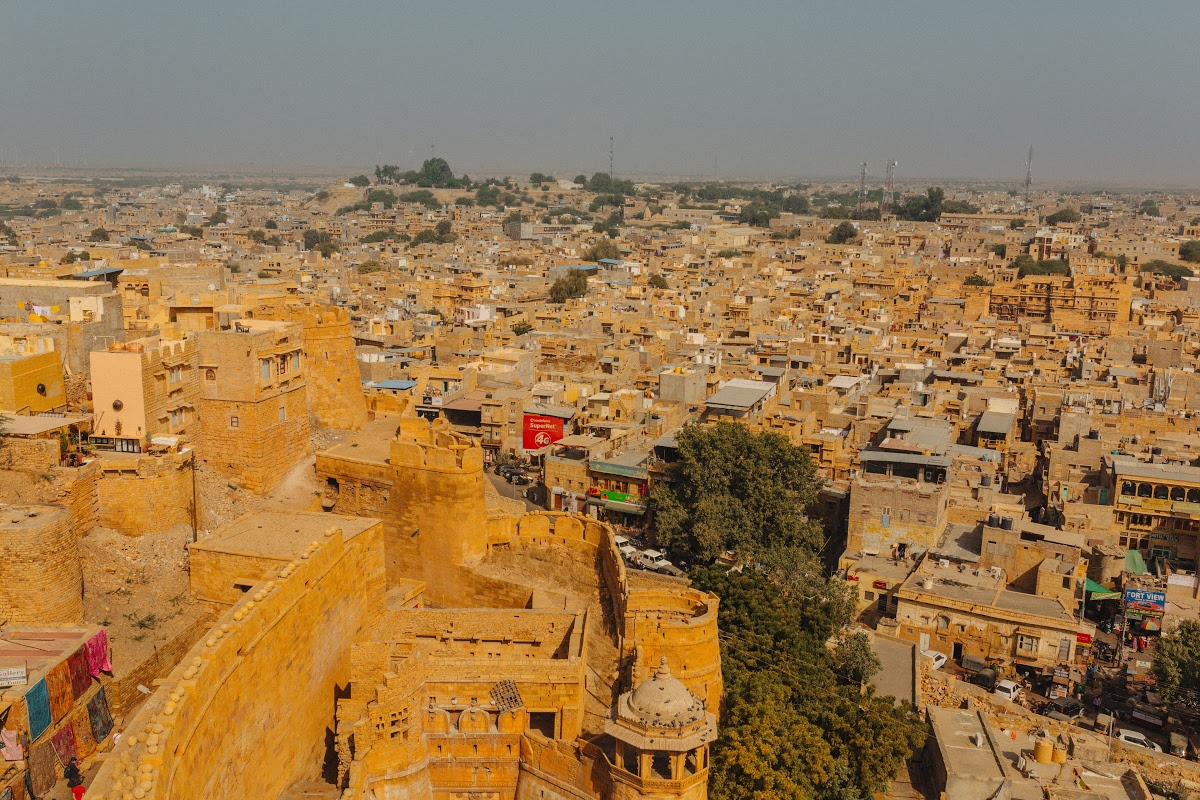
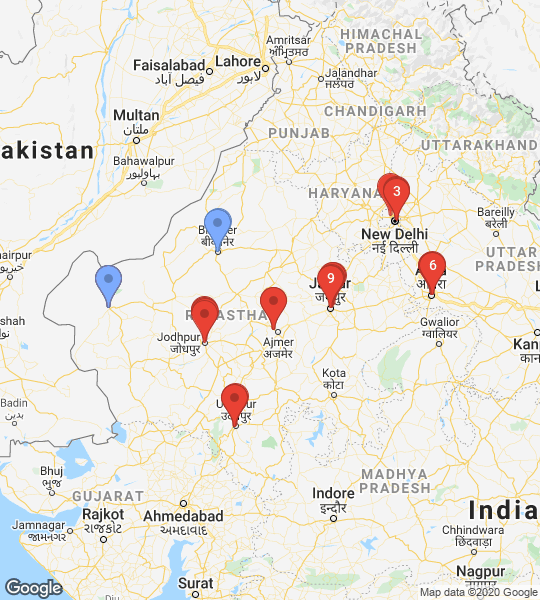
Rolling hills of honey-hued sand dunes, vast barren expanses, contrasting colours and mesmerising historical treasures, make up the stark beauty of the enchanting city of Jaisalmer, in Rajasthan. The city holds the still-inhabited Jaisalmer Fort at its heart, which seems to rise out of the desert like a mirage and looks ablaze as the golden rays of the sun bathe it. Encircled by 99 bastions, this fairytale-like-fort enthrals you with its grandeur. This far-flung city of Rajasthan invites tourists from across the globe with its intricately carved temples, narrow streets and almost perfectly concealed delights, which can be explored through camel rides amidst the mystic desert.
Day 7 Stop 1: Morning: Jaisalmer Fort
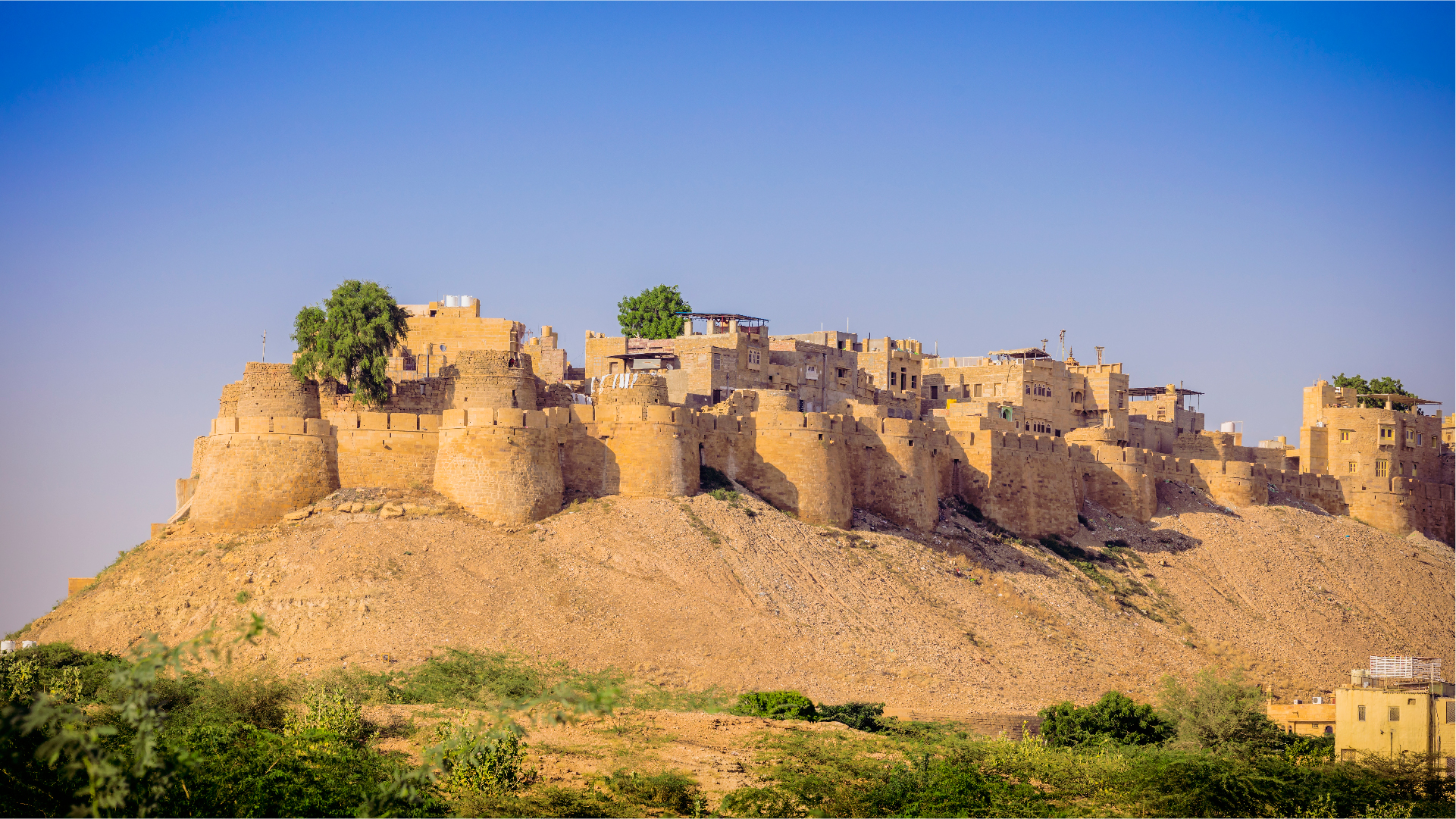
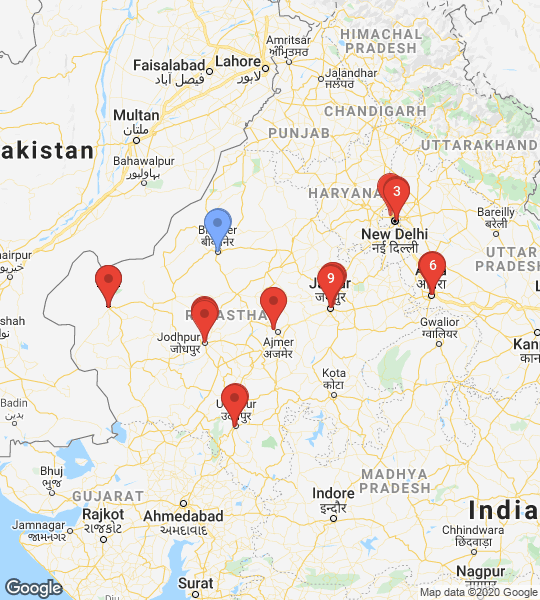
The piece de resistance of the lively Thar desert is a magnificent structure built from yellow sandstone, called the Jaisalmer Fort. Perched atop the Trikuta Hill (triple peaked hill), this imposing fort seems to rise straight from the desert and its gleaming stone façade gives the impression of it being an extension of the magnificent Thar.
Good to know:
The fort piqued the interest of Oscar-winning Indian filmmaker Satyajit Ray, who featured it in one of his films Sonar Quila or the Golden Fortress.
What to do:
The magic of this architectural marvel is best witnessed at sunset when the whole fort seems ablaze as it reflects the light from the setting sun, earning it a spot on the list of UNESCO World Heritage Sites.
Day 7 Stop 2 : Afternoon: Nathmal-ki-haveli
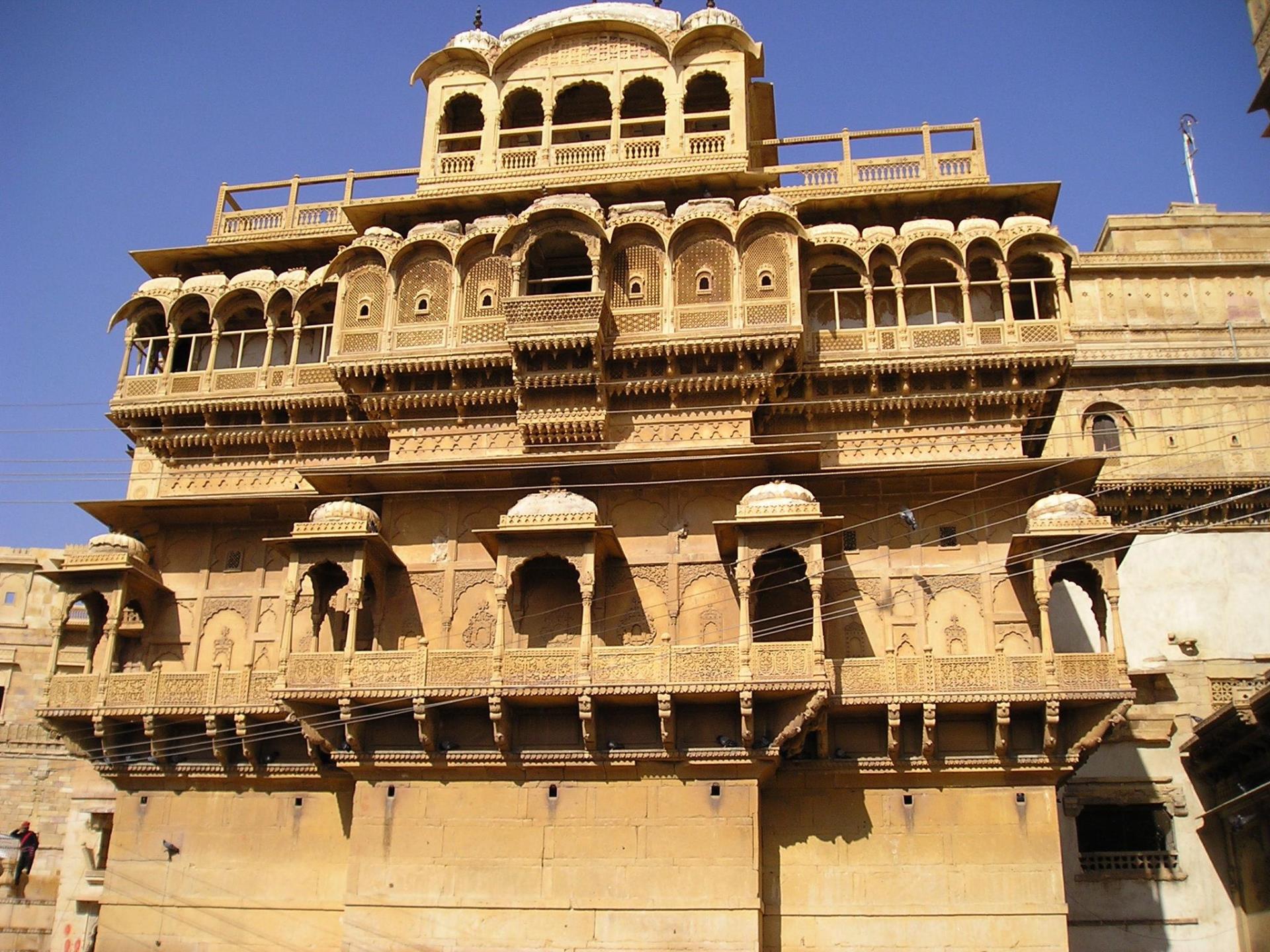
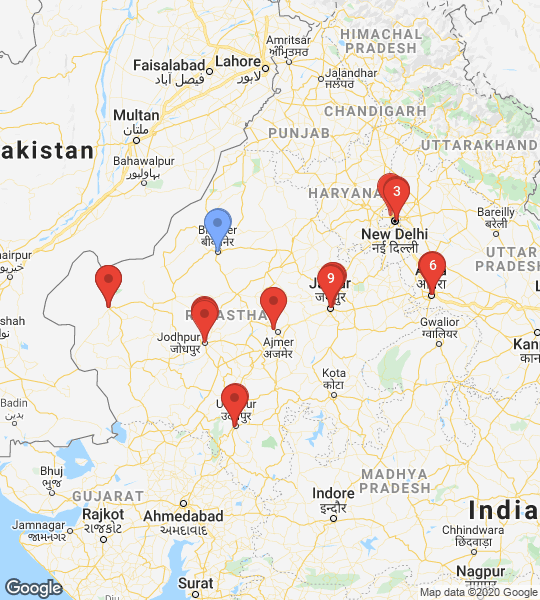
This haveli is a perfect example of the beautiful fusion of Islamic and Rajputana styles of architecture. Built by two architect brothers in the 19th century, who started the construction from opposite ends, this palace has similar but non-identical left and right facades.
Good to know:
The Nathmal-ki-haveli was commissioned to serve as the residence of Diwan Mohata Nathmal, the then Prime Minister of Jaisalmer.
What to do:
Although the haveli is partly-inhabited, you might get a chance to visit the first floor which has paintings beautifully decorated using gold leaf.
Day 7 Stop 3: Evening: Patwon-ki-haveli
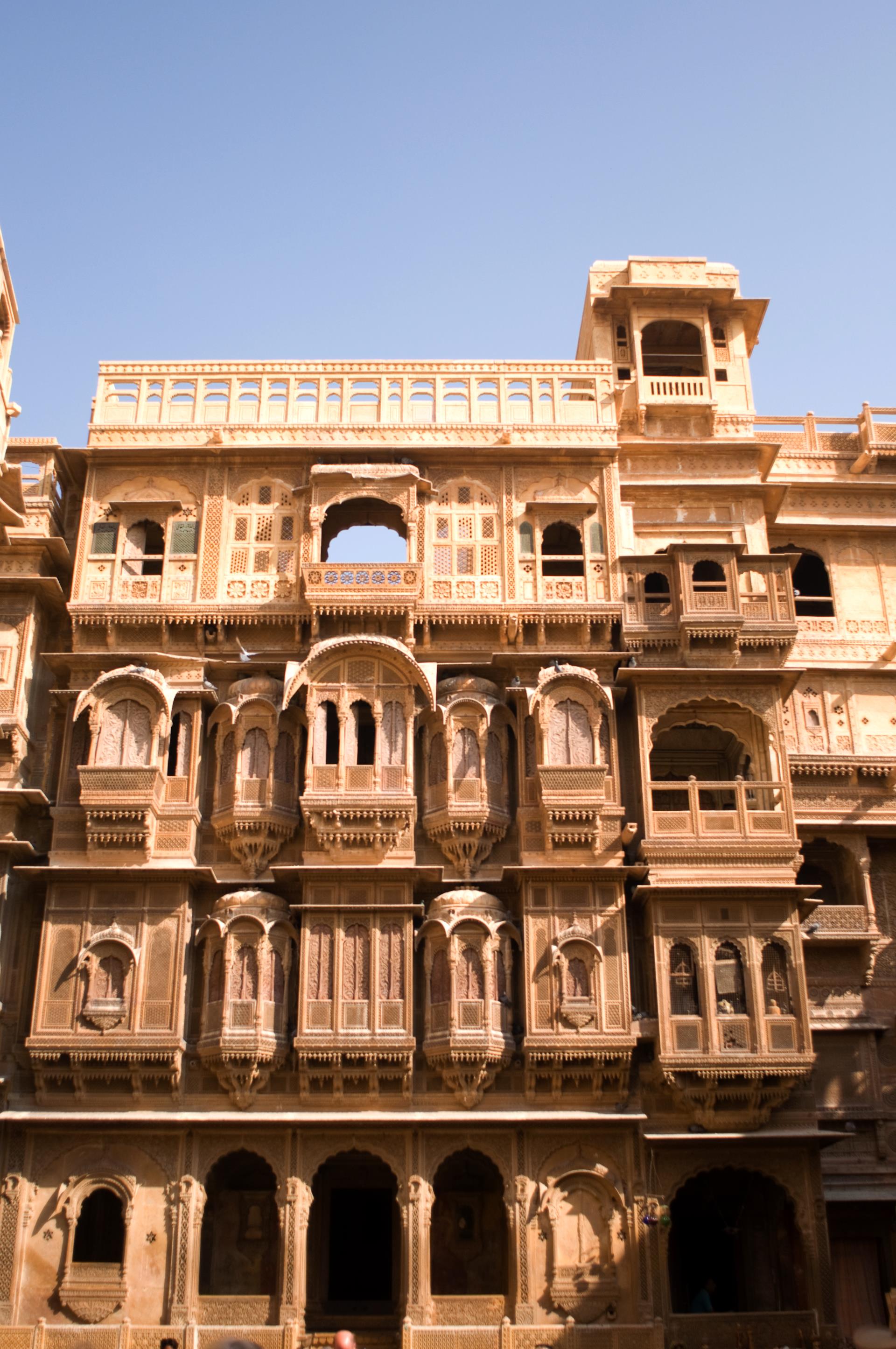
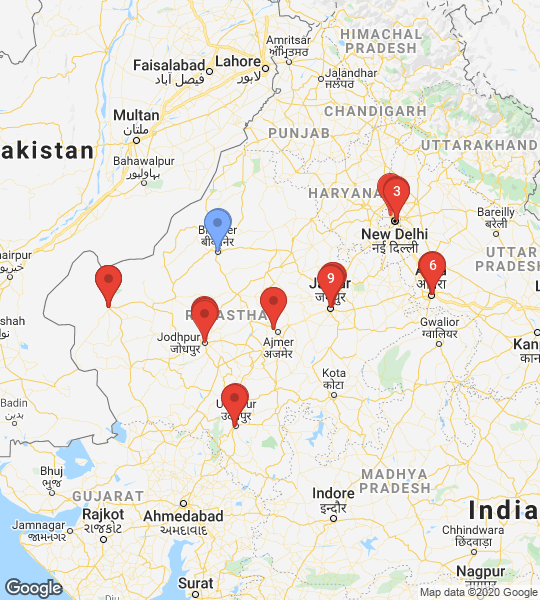
In the narrow lanes of the main city of Jaisalmer, lies the magnificent Patwon-ki-haveli, known for its pretty paintings, intricate carvings and a grandiose style of architecture. The entire complex is not a single haveli but a cluster of five smaller beautiful havelis.
Good to know:
Although the whole building is made in yellow sandstone, the main gateway of the Patwon-ki-haveli is in brown colour.
What to do:
To cater to the visitors interested in the rich cultural history of the area, one of the sections has been converted into a museum that houses several artefacts from the early 19th century. The hardwork and aesthetic skills of the local Rajasthani craftsmen can be seen in every corner of this haveli in the individual depictions and theme on every arch.
Day 8 : Arrive in Bikaner
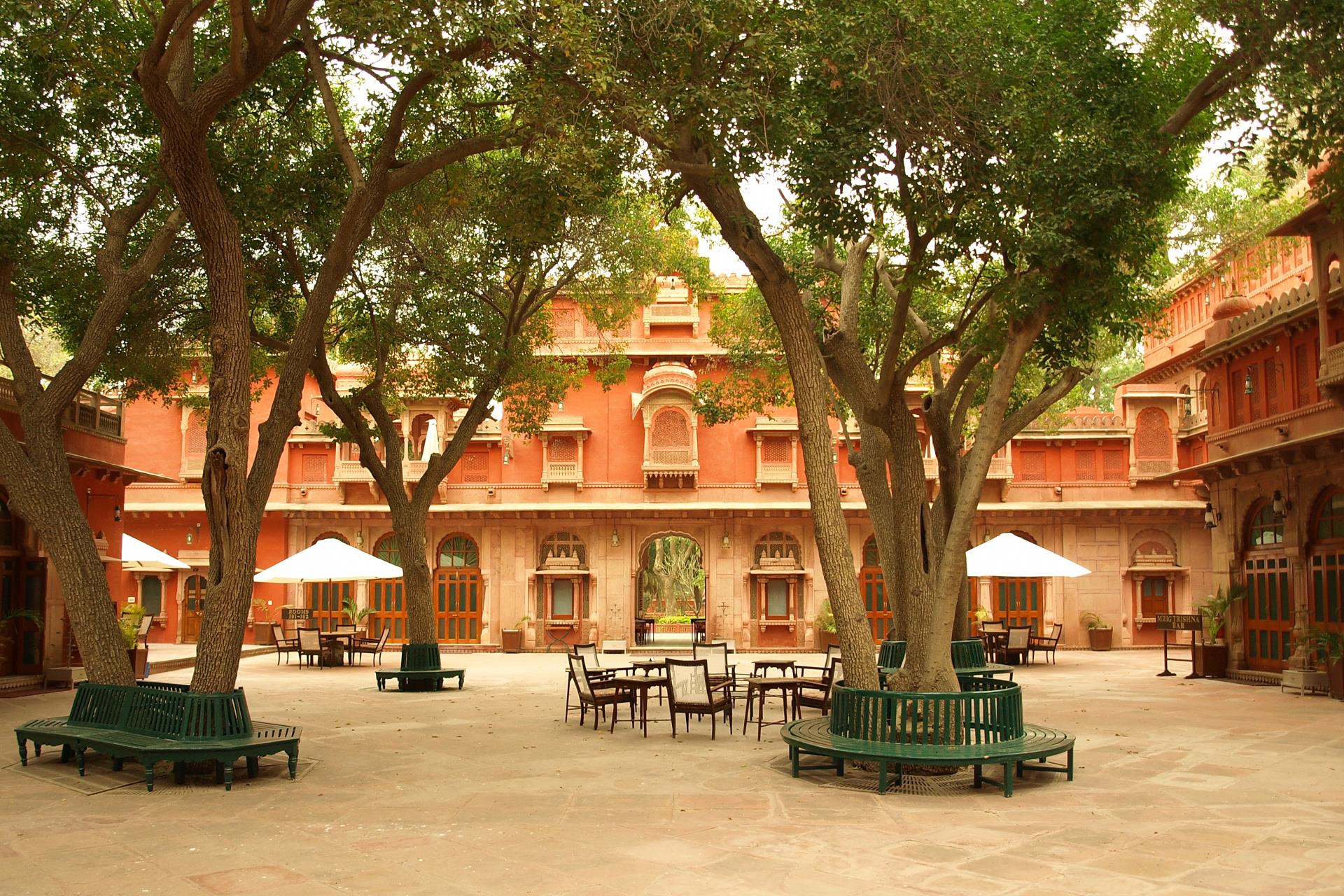
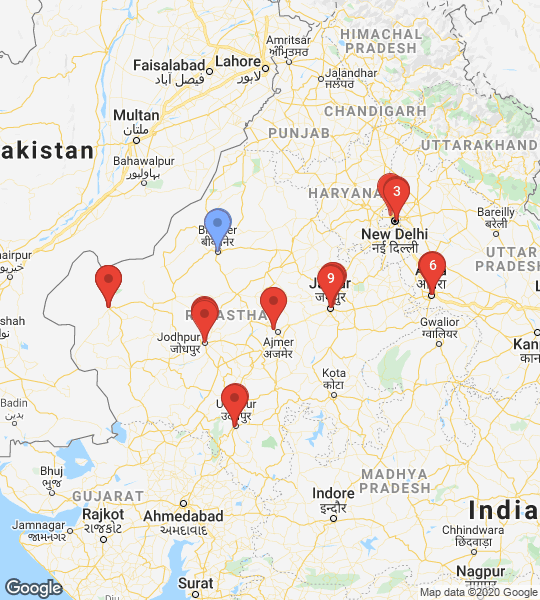
A vast expanse of golden undulating sand dunes surrounds the vibrant and bustling city of Bikaner, ensconced in the desert state of Rajasthan, making it an off-beat tourist destination. Nestled in the Thar desert, this ancient city is adorned with gigantic and spectacular forts and palaces that invite thousands of tourists across the globe. The old part of the city stands as a silent witness to the rich history of the region when it was ruled by Rao Bika, the prince of the Rathore clan, in 1488. Surrounded by high stone walls, the older part of the city is a potpourri of culture and tradition. Five gigantic gates lead you into a labyrinth of lanes that are dotted with quaint bright red and yellow sandstone houses.
Day 8 Stop 1 : Afternoon : Junagarh Fort
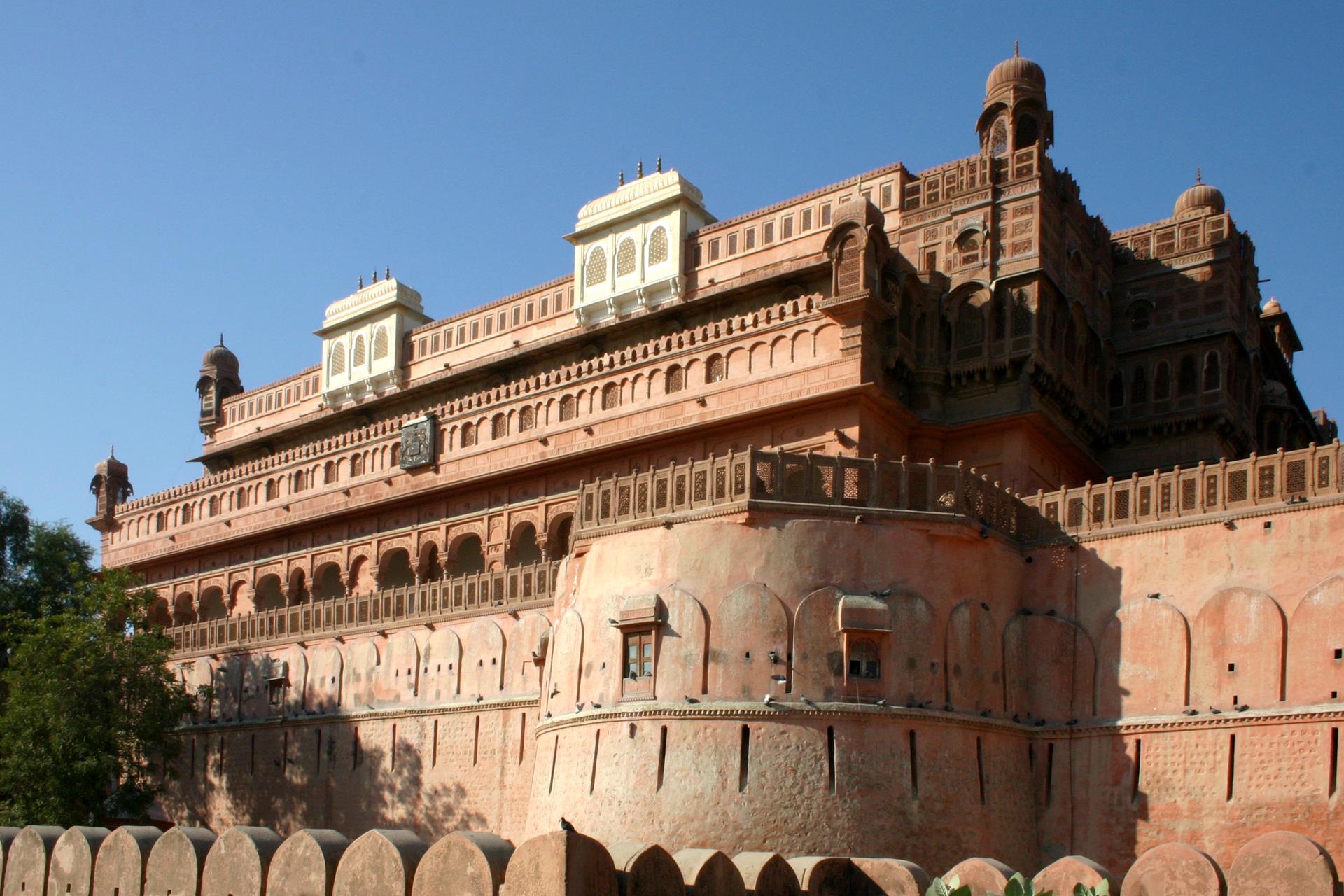
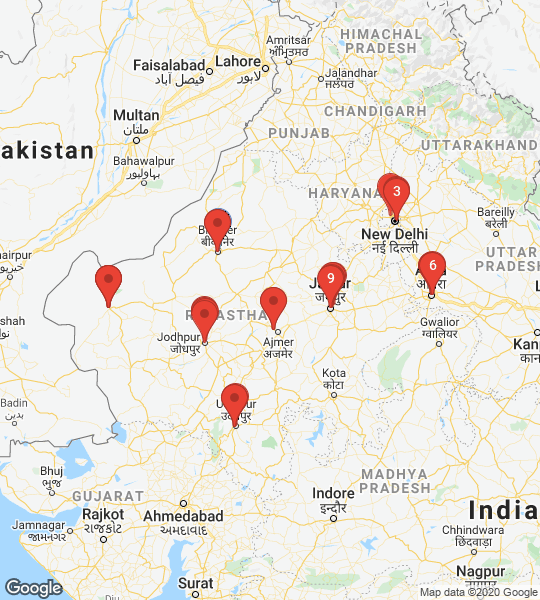
Junagarh Fort is one of the most decorated forts in India and houses opulent palaces that give you a peek into the lives and times of the maharajas of Bikaner. Unlike most forts in Rajasthan, this one has not been built on a high rock and has lower ramparts and towers. This is indicative of the fact that it was built more for luxury than defense. The fortified complex houses many beautiful palaces, which are reflective of the various rulers who once lived here.
Good to know:
Historians say that the Junagarh Fort is a living museum of arts that features an Indo-Mughal architecture. The red sandstone used in the fort is said to have been brought from Jaisalmer.
What to do:
Don't miss the DH9 De Haviland war plane, which was presented to Maharaja Ganga Singh by the British government to recognise the contribution of the Bikaner State Forces during the First World War.
Day 8 Stop 2: Afternoon: Lalgarh Palace
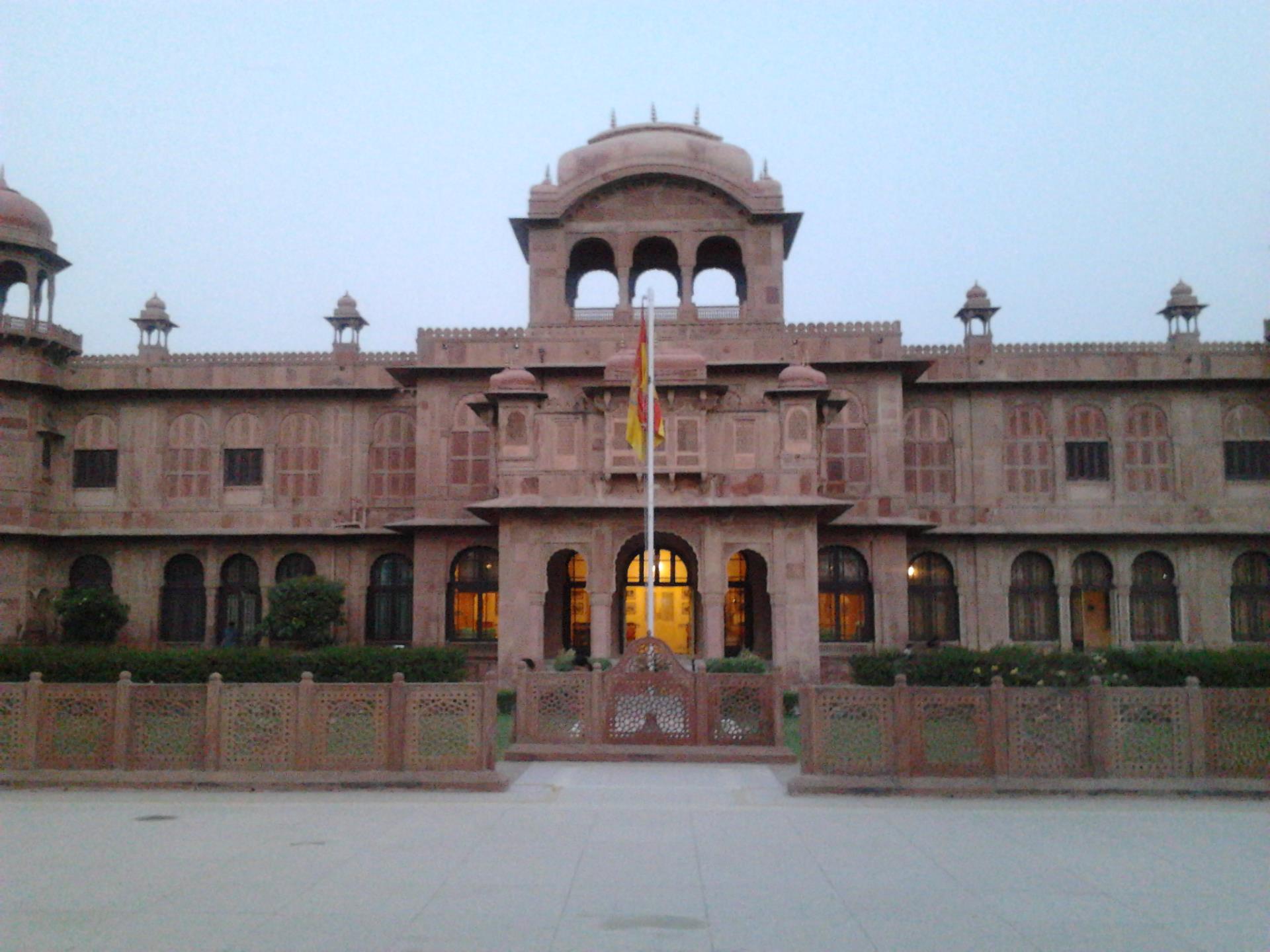
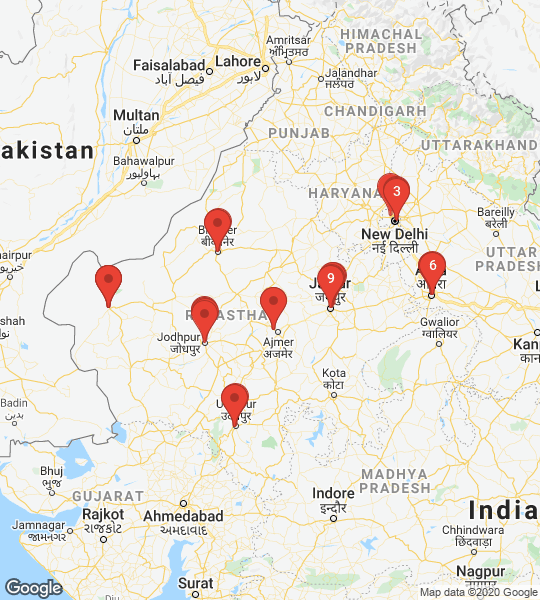
Lalgarh Palace is an architectural masterpiece showcasing the perfect blend of Rajputana, European and Mughal architecture. The exterior of this palace, built with sandstone, has an Indian influence, while the interior, replete with drawing rooms, smoking rooms, grand halls, lounges, pavilions and cards rooms, boast a quintessential British style. The complex of the palace features magnificent pillars, elaborate fireplaces, Italian colonnades, a museum and a library.
Good to know:
Two wings of the palace serve as luxury hotels while one of them houses the royal family of Bikaner.
What to do:
Visit the museum at the palace to gain insight into the princely lives of the rulers of Bikaner.










